WILLIAM H. MACY
Hollywood Legend on AI Threats and Opportunities

Saving the World from Bad Lighting
Expanding an Architectural Downlight Portfolio
Comparing Set-Top Boxes for ATSC 3.0 TV Automating Security Responses
Volume 6 / Issue 1

Hollywood Legend on AI Threats and Opportunities

Saving the World from Bad Lighting
Expanding an Architectural Downlight Portfolio
Comparing Set-Top Boxes for ATSC 3.0 TV Automating Security Responses
Volume 6 / Issue 1
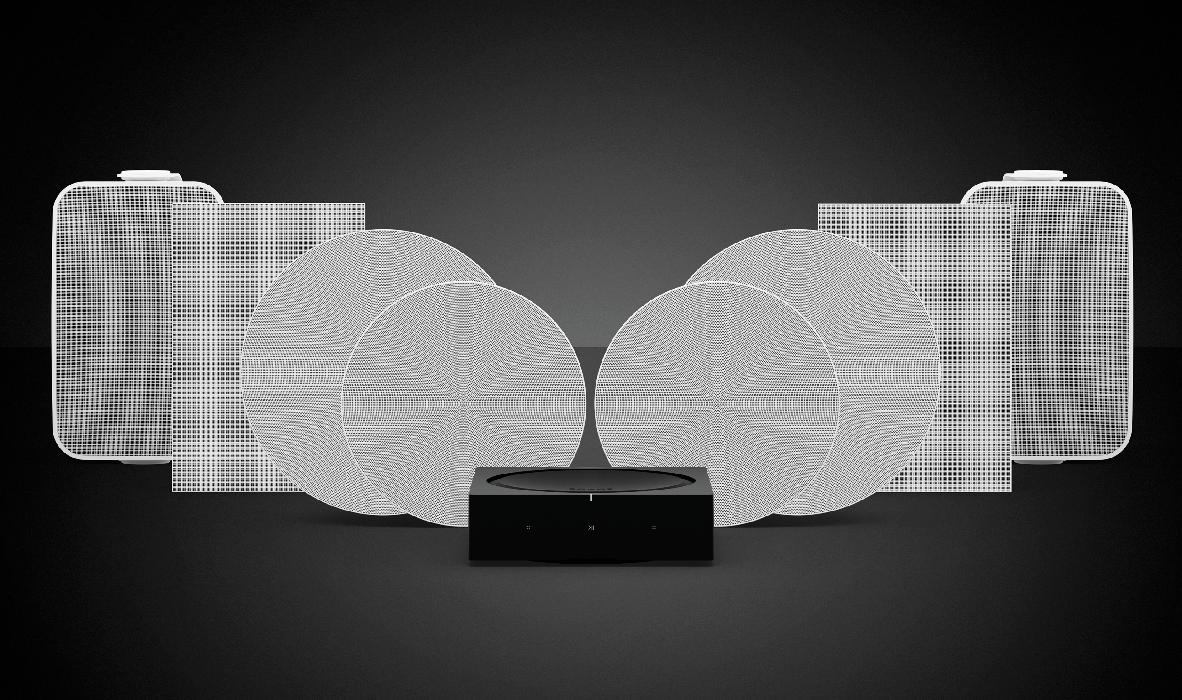
The Sonos collection of architectural speakers makes it easy to bring premium sound to every part of a home. Designed and tuned in collaboration with Sonance, these speakers offer natural, room-filling sound with discreet installation.




Obsessively crafted and masterfully tuned, the headphones that bring immersive sound for personal listening to an unparalleled home theater experience.







Choose 2N, a global leader in the field of security, access control and communication systems within buildings. We develop IP intercom and access control solutions that reflect the latest trends in digitization and building automation to meet the demands for new services in commercial and residential markets.
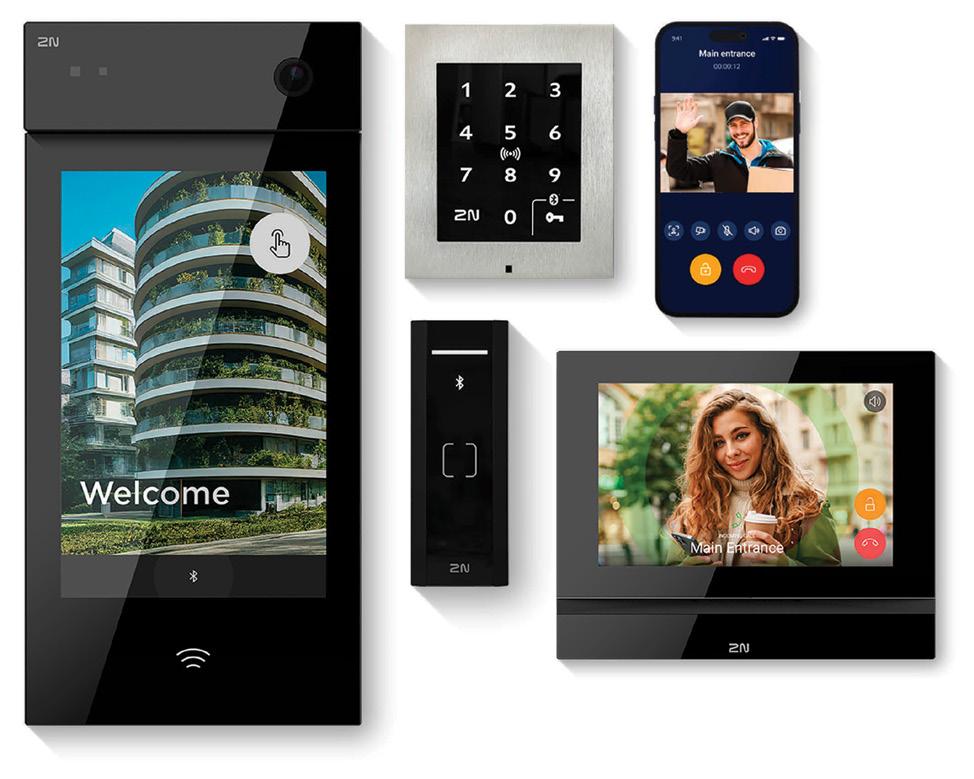
Open IP intercoms, access control
readers and answering units
High-quality video and sound without ambient noise
Easy connection via PoE
Elegant, award-winning design with intuitive controls
Integration with building systems
Remote monitoring, management and entry control
My2N mobile applications and cloud services
Axis Communications distributes and supports 2N products and solutions in the Americas and Asia Pacific. 800-444-2947 | www.axis.com | www.2n.com

“Home theaters have the potential to be the dazzling centerpiece of any home, yet we’ve seen a decline in their integration into residential spaces.”
Home Theaterology was designed to inspire technology integrators, interior designers, and architects to integrate captivating home theaters into their projects.
When I started covering this industry, dedicated home theaters were the predominant form of art for custom integrators. In recent years, fewer and fewer high-end feature these private entertainment rooms.
Homeowners and their designers on the high-end of the market seem to prefer to invest in technologies that make their lives easier (think automated, motorized shades, lighting control systems, power management, and multi-room audio systems) or more elegant (such as TVs that look like framed paintings, tunable indoor and outdoor lighting fixtures, and hidden speakers).
With all of this in mind, Richard Charschan created a new coffee table book called Home Theaterology that is designed to inspire technology integrators, interior designers, and architects to integrate captivating home theaters into their projects. Charschan, who founded his theater design firm AcousticSmart Home Theatre Interiors more than 25 years ago on Long Island, NY, obviously has his own dog in this fight, having personally observed a changing focus away from private theaters. But he says his book, which also features contributions from other notable home theater experts, is intended to raise all boats in the home theater design business.
When I spoke with Charschan on the Residential Tech Talks podcast, he said that he took inspiration from legendary home theater pioneer Theo Kalomirakis’ book Great Escapes, designing Home Theaterology to educate and inspire the design community to embrace this luxury as a centerpiece for modern homes.
Home Theaterology brings together top manufacturers and professionals to showcase 15 incredible home theater projects. These projects are beautifully photographed and include insightful tidbits about the key components that make a home theater luxurious. With insights from experts like Joel Silver on video calibration and Tony Grimani on acoustics, Home Theaterology provides valuable knowledge to inspire designers and architects to embrace the resurgent trend of home theaters.
The book is cosponsored by prominent industry-leading brands, such as Kaleidescape, Barco Residential, Screen Research, CEDIA, CEDIA Expo, Storm Audio, Meridian, JBL Synthesis, D-Tools, TPI, 360 Power Quality, and MadVR, among others. Barry Sonnenfeld, an acclaimed Hollywood director and cinematographer, has written a foreword, emphasizing the critical role of home theaters in delivering an unparalleled cinematic experience. Max Weinberg, drummer for Bruce Springsteen’s E Street Band, also wrote a foreword in which he chronicles his journey to recreate and elevate the cinematic experience at home.
Charschan self-financed the printing of 1,000 copies of the premium-priced book, which will be available to CEDIA Expo 2024 attendees at a discount or via a special Home Theaterology website (hometheaterology.net).
Charschan hopes that custom integrators will purchase copies of the book to serve as inspiration to clients visiting their own showrooms and to provide to their design/build partners to help them better understand what they have been missing.
“Home theaters have the potential to be the dazzling centerpiece of any home, yet we’ve seen a decline in their integration into residential spaces,” Charschan said. “To reignite this passion, we created Home Theaterology. It’s more than just a publication; it’s a movement to elevate the home theater experience and educate the custom integration, design, and architecture communities on the immense potential of home theaters.”


IT’S DONE WITH DM NVX. EXPERIENCE IT AT CEDIA® EXPO, BOOTH 1901
Drop the needle. Network the fidelity. DM NAX® Audio-over-IP Edge Devices easily bridge any audio from any source — CDs, Bluetooth® audio, even vinyl records — onto the network. Powered by the DM NVX® AV-over-IP platform, they give your clients more ways to enjoy their favorite music. However they want. Wherever they want. With pristine audio reproduction and effortless Crestron Home® OS control.
Don’t miss a single issue of Residential Tech Today. Subscribe now and continue to get insightful coverage of the smart home market!





Scan the QR Code to subscribe today!
SPECIAL THANKS TO:
Melissa Andresko, Carol Campbell, Ashley Collazo, Sarah Cox, Veronica Esbona, Michael Farino, Kimberly Lancaster, Brittany Loeffler, Caleigh McDaniel, Lucette Nicoll, Jess Passananti, Ron Pence, Peter Schuyler, Art Sesnovich, Micah Sheveloff, Laura Shubel, Payton St. Lawrence, Olivia Sellke, Cat Toomey, Rosimely Ulpino
This publication is dedicated to the dreamers, the innovators, the collaborators, and the doers – who can’t be bothered by those saying it can’t be done. Nicholas and Aria, the future is yours!
PUBLISHER/EDITOR-IN-CHIEF Charles Warner cwarner@goipw.com
CREATIVE DIRECTOR Shane Brisson shane@goipw.com
EXECUTIVE EDITOR Jeremy Glowacki jglowacki@goipw.com
MANAGING EDITORS Lindsey Feth Aron Vaughan
Andrew Ward
CONTRIBUTING EDITOR Michael Heiss
CONTRIBUTING WRITERS Jay Basen
Henry Clifford
Ganya Golan
Michael Heiss
Walter Joseph
Jennifer Kent
Anthony Leo
Doug Roberson
CHIEF REVENUE OFFICER Jessica Ferranti
ACCOUNT EXECUTIVES Andrew Behringer
Dave VanNiel Holly deBack-Walslager
VIDEO/PODCAST PRODUCER Alan Tuszynski
DISTRIBUTION CMG
PRINTING Journal Graphics
Advertising inquiries, please contact Jessica Ferranti, email jferranti@goipw.com or call 720-608-6898.
by:
INC 1750 Wewatta Street, #1821, Denver CO 80202 | (720) 476-4920 www.restechtoday.com | info@restechtoday.com
For print or digital subscriptions, visit restechtoday.com, or find us on popular digital newsstands and readers.
POSTMASTER: Send address changes to RESIDENTIAL TECH TODAY, 1750 WEWATTA STREET, #1821, DENVER CO 80202

A first-of-its-kind, three-in-one shade for the ultimate in light control. Lower the textured front shade to enjoy gorgeous, filtered daylight. Lower the room-darkening liner behind the front shade to enhance privacy. Or create a relaxing evening ambiance with the built-in lighting, which illuminates the liner, filling the room with a beautiful glow.



Photo: John S. Miller
How
32 Expert suggestions for the proper selection of wiring and cable, home networks, and power management solutions.
34 Meticulously monitoring properties to reduce false alarms and automate security responses.
36 Boosting consumer engagement with residential energy solutions.
42 Comparing ADTH, Zapperbox, and Zinwell set-top boxes for viewing off-air, ATSC 3.0 TV. 50 Conquering the
52 The eero Max 7 Wi-Fi system retains its ‘things that just work’ title.
53 Hands on with the CleanForce Air Rainbow air purifier.
54 Checking out the Juke+ six-zone streaming amplifier.
55 Henry Clifford’s experience with the Savant Power System demo kit.
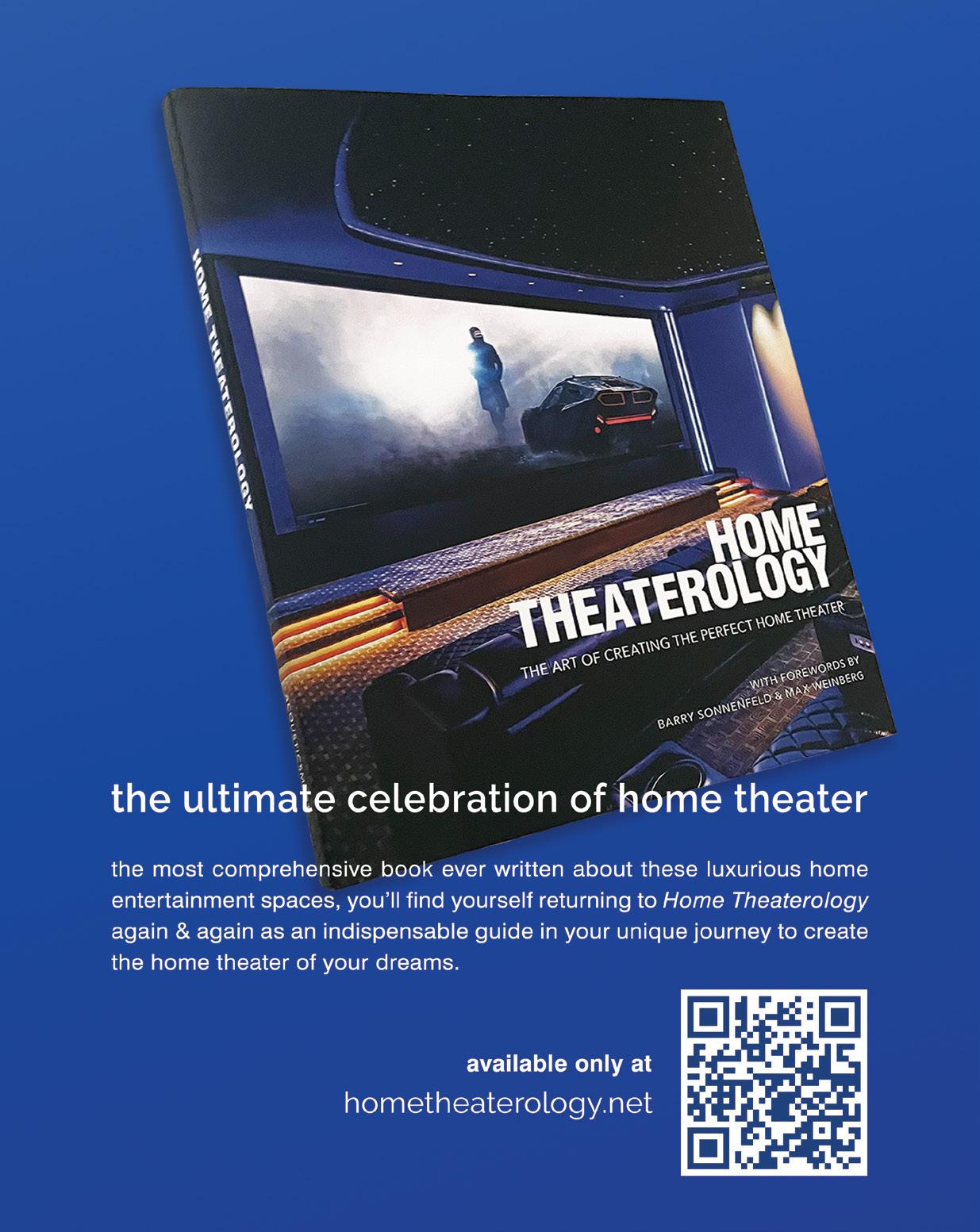





Jay Basen is retired from his 40-year career in professional software development but still keeps his tech skills sharp with special projects and product reviews. During his time in the industry, the Silver Certified Crestron programmer specialized in the design, development, and installation of automation, building management, and energy management systems for residential and commercial buildings. In this issue, he reports on Matter v1.3’s support features, Shelly’s newest series of products and integrations, and Aqara’s Hub M3.
Henry Clifford founded Richmond, VA-based Livewire in 2001 to meet the growing demand for technologically integrated homes and businesses. In 2018, he co-founded Parasol, a remote service support company, and has served on the CEDIA Board of Directors. His most recent venture was the recent launch of IntegrateU, a professional onboarding service for the custom integration industry. In this issue, he reviews the eero Max 7, Juke+ 6-Zone Streaming Amplifier, and Savant Power System Demo Kit.
Danya Golan is VP of marketing for Hailo, whose product portfolio includes AI accelerators that integrate with edge platforms, empowering real-time deep learning inference tasks on the edge, and a range of AI vision processors. In this issue, she writes about the impact of edge AI and intelligent security cameras.
Michael Heiss is a former product and marketing executive at Harman International. He was a promotion manager at NBC and key to the development of hotel in-room movies and created the first nationwide movie rental service for Beta and VHS cassettes. Heiss is a CEDIA Fellow, recipient of CEDIA’s Lifetime Achievement Award, a member of the TV Academy, the Society of Broadcast Engineers, and is a Life Member of both IEEE and SMPTE. In this issue, he compares ADTH, Zapperbox, and Zinwell set-top boxes for bringing ATSC 3.0 (NextGen TV) off-air TV into homes.
Jennifer Kent, PhD, is VP of research for Parks Associates, the market research and consulting company in Dallas, TX. In this issue, she presents an excerpt from Parks Associates’ recent white paper, The Power Play: Uniting Smart Devices for Home Energy Management released in partnership with Resideo.

Are you experienced?




















Step into a legacy of unparalleled sound, with
Join us in the Denver Convention Center main hallway for an exclusive presentation of The Sony ES Experience at CEDIA in Denver.
Redefine your concept of immersive listening with Sony ES high-performance audio and 360 Spatial Sound Mapping technology. This year, we’re excited to partner with Focal to bring a one-of-a-kind experience to life.
Don’t miss the chance to witness the best in class with Sony’s STR-AZ7000ES AVR— and truly hear the Sony di erence.
See you there, The Sony Team

By Jay Basen
Matter, the open source, IP-based protocol, was created to be a unifying standard that will help people create a reliable and secure IoT ecosystem in a smart home. It is also designed to help smart home device manufacturers by allowing them to build products based on a single protocol instead of products for each smart home ecosystem, including Amazon Alexa, Apple HomeKit, Google Home, Samsung SmartThings, and others.
The Connectivity Standards Alliance (CSA) has released version 1.3 of the Matter protocol specification, adding support for energy management, electric vehicle charging, and water management, as well as support for microwave ovens, ovens, cooktops, vent hoods, and laundry dryers. Finally, version 1.3 adds enhanced support for media players and TVs, scenes where commands for multiple devices can be triggered by a single command, and command batching, where multiple commands can be combined into a single message.
When it comes to energy management, Matter 1.3 could, for example, enable any device type to include the ability to report actual and estimated measurements, including instantaneous power, voltage, current, and others, in real-time, as well as its energy consumption or generation over time. This capability could, in turn, help users understand and manage their energy use, save money, and reduce their carbon footprint.
Matter 1.3’s energy features also enable new energy-centric devices, the first of which is Electric Vehicle Supply Equipment (EVSE).
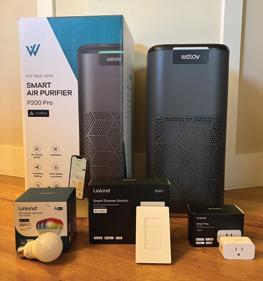
AiDot’s Matter v1.2-compatible products showed a lag between when a device is in the specification and when Apple, Amazon, Google, and SmartThings will support it in their ecosystems.
This helps EV charging equipment manufacturers present a consumer-friendly way to control how and when they charge their vehicles. It features the ability to manually start or stop charging, adjust the charging rate, or specify how many miles of range to add by a set departure time. The charging station then automatically optimizes the charging to occur at the cheapest and lowest carbon times.
When it comes to water management, Matter 1.3 offers support for leak and freeze detectors, rain sensors, and controllable water valves, providing homeowners with enhanced monitoring, management, and protection over water in and around their homes.
I tested several AiDot’s Matter-compatible products, including the AiDot P200 Pro, the world’s first Matter-compatible air cleaner. Support for air cleaners was recently included in version 1.2 of Matter protocol specification. As I discovered, there is a lag between when a device is included in the specification and when Apple, Amazon, Google, and SmartThings will add support for it into their ecosystems.
Another interesting aspect of the implementation of Matter by various IoT device manufacturers is that some are building support for the Matter protocol directly into their products, while others are adding a Matter bridge product to their lineups that bridges between the Matter protocol and the company’s existing API to communicate with their products.
At first, I believed that these Matter bridges were a way for a company to quickly add Matter
support to their existing products, and over time, the bridge would go away as Matter support was added to individual products. However, I’m now hearing that this may not be the case.
It turns out that the process of adding Matter protocol support to an existing product, including going through the certification process, can be quite expensive for a device manufacturer. For companies that innovate and add new features to a product on an ongoing basis, the certification process needs to be repeated with each product update, which adds to the expense.
In addition, the Matter protocol, in its current form, tends to dumb down a product because unique features that a company may have implemented to differentiate its products from competitors may not be supported in the protocol.
A Matter bridge solves these issues because it only has to be certified once, even if the company’s other products that work through the bridge go through numerous updates. This can reduce the expense of implementing Matter. Also, a company can offer unique and innovative features that are only available through a product’s existing application programming interface (API), even though only basic control features are available through the Matter bridge. This allows a company to continue offering unique features that differentiate their products from competitors.
So, don’t be surprised by companies offering Matter bridges instead of building Matter protocol support directly into their products. x

AiSPiRE Adds an Adjustable Retrofit Fixture for Replacing Recessed Downlights
By Anthony Leo
There are now more options when it comes to adjustable retrofit residential downlights, thanks to the new ASTRO 6" fixture from AiSPiRE, WAC’s integrator-only lighting brand. Designed as a replacement for any traditional 5" or 6" incandescent recessed fixture, it can be aimed straight down or angled and offers a dim-towarm luminaire from 3000K to 1800K.
By mimicking an incandescent lamp’s dimming appearance, AiSPiRE shifts color temperatures to create a visually comfortable and familiar experience while still benefiting from the energy savings and long life of LEDs.
The ASTRO family offers several dim-towarm options that are designed to be easy to install and use, delivering a range from a 3000K white light — the color of halogen — to a warm 1800 Kelvin. Traditional LED, in contrast to this dim-to-warm alternative, does not change color or warm up when you dim the light like incandescent sources. At full brightness, dim-towarm luminaires perform at 3000K color temperature and a 95-plus color rendering index for a crisp white light. Dim-to-warm technology allows you to dim to a more intimate, calming glow at 1800K candlelight ambiance, providing a warm mood with gentle illumination. All dimto-warm options utilize the TRIAC (Electronic Low Voltage Universal) protocol.
Earlier in the year, AiSPiRE also unveiled Colorscaping, which is a line of exterior LED luminaires designed and engineered to illuminate landscapes with tunable white light and an unlimited color palette.
Integrating the latest developments in RGBWW technology, Colorscaping is designed to make a landscape pop with pure white light ranging from warm 2700K to cool 6500K. For outdoor entertaining and nighttime activities, warm illumination delivers an inviting vibe and relaxing atmosphere for a quiet evening in an outdoor kitchen, mimics the comforting glow of

a campfire, and brings out the beauty of the stonework and masonry. For safety, security, and a stunning look, cooler white light highlights architectural details and increases visibility in your outdoor space.
Users of the Colorscaping systems will be able to create drama with various layering and other techniques using tunable white fixtures. Position luminaires in tall trees to develop a beautiful moonlighting effect on the ground and watch shadows change with the wind. Focus on architectural elements, sculptures, or fountains with strategically placed fixtures to create silhouette designs. Place luminaires at ground level to evoke the vibrant colors in the flower garden or illuminate climbing vines on an arbor or gazebo.
New and existing landscape fixtures can be installed quickly using the WAC Smart Transformer Control Panel, which connects fixtures directly for immediate testing while cycling through preset tunable white and primary colors at various intensity levels. Offered with 150-watt and 300-watt capacities, the smart transformer enables robust wiring, a shielded Ethernet cable, and a surge protector against power surges and voltage spikes. The transformer eliminates any confusion in the field with its Discovery process — identifying
each Colorscaping fixture and location so the luminaires can be added, changed, or paired with the appropriate transformer — with the push of a button. Integration with many major control platforms is an alternative to app-based control.
Colorscaping integrates a full selection of WAC landscape lighting fixtures, including adjustable accent, wall wash and path lights, hardscape, tape light, and existing landscape lighting fixtures, too.
Colorscaping fixtures can be controlled using the MyWAC App, which enables individual addressing and operation of each Colorscaping luminaire independently or as a part of a group or favorite lighting scene. Fixtures can be assigned to various schedules for every day of the year based on daylight savings, dates, times, or dynamic patterns like sunrise and sunset.
The system can also be controlled by the WAC WallStation, an interior control interface installed on a wall or fixed surface. The WallStation features four pre-configured scene buttons, a dedicated on/off button, and dimming capability, and is fully customizable via the MyWAC App. Program each of the four scenes within the app, then use the wired Wall Station to control them via the local Wi-Fi network.x

By Walter Joseph
Custom integrators have long struggled with managing on-call tech support processes, often resorting to piecemeal solutions that lack sophistication. Technicians are frequently asked to monitor shared inboxes or carry around a dedicated on-call cell phone.
Inbound support requests route indiscriminately to these channels without consideration for the urgency level or the client’s eligibility for after-hours support. These half-baked processes put unnecessary stress on technicians and result in an unpredictable client experience.
Now, with ProVision Signal, OneVision hopes to make it easier for integrators to build an incident response plan that ensures clients get the level of service they need for their technology issues 24/7/365.
Signal features a drag-and-drop interface that OneVision says makes building, viewing, and managing on-call schedules quick and intuitive. Customizable notification types allow on-call technicians to receive emails, automated phone calls, or text messages to their personal devices whenever their assistance is needed.
Signal also includes ‘Noise-Free Notification Routing,’ a rules-based notification engine designed to notify technicians only when an after-hours support event is truly actionable. In addition, the software offers layers of redundancy — including multiple notification sequences and support for primary and backup on-call technicians — giving business leaders the peace of mind that their clients will never be left in the lurch when help is needed.

“We designed Signal from the ground up to bring an unprecedented level of simplicity and sophistication to managing the on-call process for CI professionals,” said Jason Griffing, OneVision’s director of product. “Having a robust system in place to ensure consistent response times around the clock is too often overlooked as a key ingredient of a successful service program.”
With Signal, integrators on the OneVision Platform have access to a modern cloud-based solution for managing this critical component of their service operations. Business owners can be confident that clients will always receive the help they need promptly. Clients consistently receive guaranteed response times, and
technicians benefit from reduced interruptions from non-actionable events and a simple process for resolving issues that do require afterhours attention.
“Signal has been a game changer for managing our on-call schedule,” said Craig Brayman, president of Future Home Integration. “The interface is intuitive, and the process for managing notifications couldn’t be easier. As a business owner, I rest easier knowing that my clients are always taken care of and that my team has a clear and repeatable on-call process in place.”
Signal is available now to integrators on the OneVision Platform. x
SoundTube’s Dante® end-to-end system is the solution.
SoundTube’s STNet Dante-enabled audio over IP systems offer integrators and their users unparalleled exibility – they’re versatile, sophisticated, and affordable.
For Customers:
• Enjoy exible and easily recon gurable spaces with enhanced control and convenience.
• Bene t from ef cient powered speakers and remote diagnostics at comparable system cost to 70V.
• Experience seamless audio integration and control, making your environment adaptable to your needs without extra hassle.
For Integrators:
• Streamline installations and enable ef cient remote monitoring with simpli ed setup and IoT architecture.
• Ensure seamless operations and compatibility with full Dante integration, reducing complexity and maintenance costs.
• Unlock new revenue opportunities by facilitating audio as a service, thanks to the system’s advanced features and ef ciency.
Create an enitre system with SoundTube’s ingenious solutions










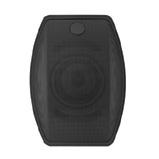
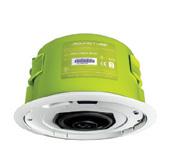
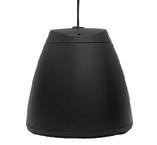
By Jay Basen
Earlier this year, Shelly announced a series of new products and integrations to help solve a wide range of challenges in the smart home. These include a variety of smart relays for turning devices on/off and monitoring power, modules for dimming lights and controlling RGBW light strips, smart power monitors, smart light bulbs, and smart sensors for motion, temperature, humidity, water (flood), door/ window open/close, natural gas, and LP gas.
Shelly products come in a variety of form factors, including models specifically designed for the professional integrator market that are DIN rail mountable and others that are smaller than an Oreo cookie and designed to sit in an electrical box behind a light fixture or wall switch.
The Shelly BLU Button Tough 1 is a new Bluetooth button designed to withstand rough handling, dust, and water, making it ideal for harsh environments. It supports multi-click actions and integrates with other Shelly devices, Home Assistant, and any other device that supports the BTHome protocol. It can be used to turn appliances on/off, dim lights, and trigger scenes.
Shelly BLU Button Tough 1 has a range of 10m indoors and 30m outdoors, and like other Shelly BLU devices, scripting on a Shelly device acting as a gateway can be used to customize its functionality. Shelly BLU Button Tough1 includes a “find me” function and offers sound alerts and “hush” mode for no sounds.
Shelly Blu H&T is a new Bluetooth humidity and temperature sensor that can be used indoors or outdoors. It is fully waterproof and dustproof and detects and reports temperature and humidity every minute. Its single 3V CR2032 battery can last up to three years. Like other Shelly BLU devices, scripting on a Shelly device acting as a gateway can be used to customize its functionality. It is designed to integrate with
other Shelly devices, Home Assistant, and any other device that supports the BTHome protocol. Shelly Blu H&T can also share data with other systems through the use of webhooks and the MQTT protocol. It also can be leveraged to trigger smart home automations and scenes.

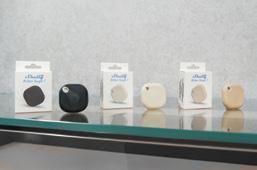
Shelly’s PRO series line of products are DIN rail-mountable devices that can avoid the issues of Wi-Fi interference from high voltage wiring by being connected to an Ethernet network with standard category network cables (Cat-5, Cat-6, etc.) The Shelly LAN Switch provides a convenient DIN rail mountable solution for connecting multiple Shelly PRO devices to the home/business network. It includes five 10/100 mbps, RJ-45 ports.
Shelly has announced the integration of the Shelly PRO series and Gen 3 lines of products with KNX through a firmware update. KNX is a global standard for building and home control that has been used for more than 25 years. It is an open protocol standard that allows communication between various devices and systems used in buildings.
This integration leverages the KNX over IP protocol and features full bi-directional feedback and control between a KNX controller and Shelly devices. Changes made to Shelly devices by a KNX controller will be immediately reflected by the Shelly device and its software interface. Similarly, if changes are made to the Shelly device through its software interface — http/https API — etc. those changes will
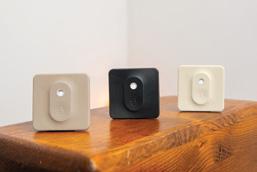

immediately be reflected on the KNX controller.
The Mini line of Shelly Gen3 relays have all the same capabilities as other Shelly devices but in a space-saving format that makes it easier to install them in tight spaces where larger devices won’t fit. The Mini line is 35% smaller than equivalent Shelly Plus devices. This allows the new Mini line of Shelly Gen3 relays to fit in very small spaces. The Shelly Mini line includes the Shelly 1PM Mini Gen3 to control and measure the power consumption of appliances up to eight amps, the Shelly PM Mini Gen3 to measure the power consumption of connected appliances, and Shelly 1 Gen3 to control appliances up to eight amps with its internal relay.
In addition, Shelly now offers Z-Wave versions of the Shelly Qubino Wave 1PM Mini, the Shelly Qubino Wave PM Mini, and the Shelly Qubino Wave 1 Mini. These devices are 35% smaller compared with Shelly’s original Z-Wave products for simpler installation inside electrical boxes; include the latest Z-Wave 800 Series technology; support for automatic set-up with SmartStart; support for over-the-air firmware updates; and work with Z-Wave certified hubs and over 4,000 existing Z-Wave devices. x



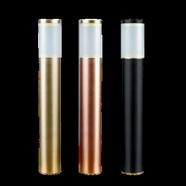

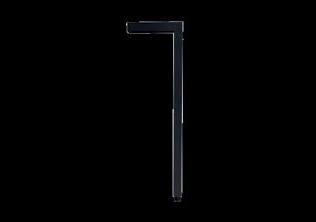






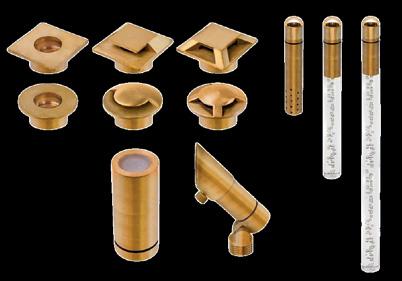

By Anthony Leo
Josh Edge combines the simplicity of a hard button TV remote, convenient in-room device control, and near-field voice assistance in a beautiful package.
Josh.ai continues rapidly innovating and increasing the power of artificial intelligence in the home. Following an earlier launch of 19 new natural AI voices, its AVA Cinema Remote experience, app enhancements, Josh Touchscreen, and Nimble DevSuite, the company revealed its “just one thing” to a select dealer audience.
Josh.ai presented Josh Edge as a way to provide simple and intuitive handheld control in the home. Based on years of partner input, dealers were empowered to provide feedback and back the project if they wanted Josh.ai to build it. In the first hour, Josh.ai reached its crowdfunding goal to move forward and build Josh Edge.
Machined out of aluminum for durability, Josh Edge will combine elegant and ergonomic design into a complementary hard button companion. The remote has an expected battery life of three months on a single charge, achieves a price point that dealers are excited about, and includes key features with its button mapping and side volume control.
Central to the product is a tap-to-talk nearfield voice control button. Josh Edge is location and contextually aware, so commands like “open the shades” or “watch ESPN” are simple to achieve. In addition, JoshGPT provides immediate answers to any question a client might ask. Below the voice button, the bottom half of Josh Edge is dedicated to media control with a multi-directional navigation pad and AV buttons for a universal remote control experience with Apple TV, Roku, Kaleidescape, Dish, Xfinity, and more.

At the top of Josh Edge is a set of six custom buttons that are entirely swappable based on a client’s needs for any particular area. The upper buttons offer the ability to control specific devices in the room, like lights, shades, fans, and music. The buttons can also be used to activate custom scenes like Movie Time and Room Off or can be configured to execute more video commands. For example, a user may want to toggle TV subtitles or provide shortcuts to favorite channels and services like Netflix.
The ability to customize Josh Edge is important as it enables dealers to configure the product for a particular room while providing simple buttons to control whatever is most important for their client. The buttons are designed to be backlit, which was another feature built with dealer feedback in mind.
“After our Winter Launch Event, we were thrilled to be able to propose the Josh Edge vision with our dealers to foster a collaborative approach to roadmap development,” said Alex Capecelatro, CEO of Josh.ai. “Our goal at Josh.ai is to create products and experiences that are simple, private, and delightful to use.” The Josh. ai team is committed to working closely with our dealers, and this initiative has been an incredible testament to our industry. I want to personally thank our community for the overwhelming support and feedback on this proposal, and we cannot wait to deliver Josh Edge to our customers.”
Josh.ai has begun development of Josh Edge to showcase it at the CEDIA Expo and ship it to customers by the end of 2024. x
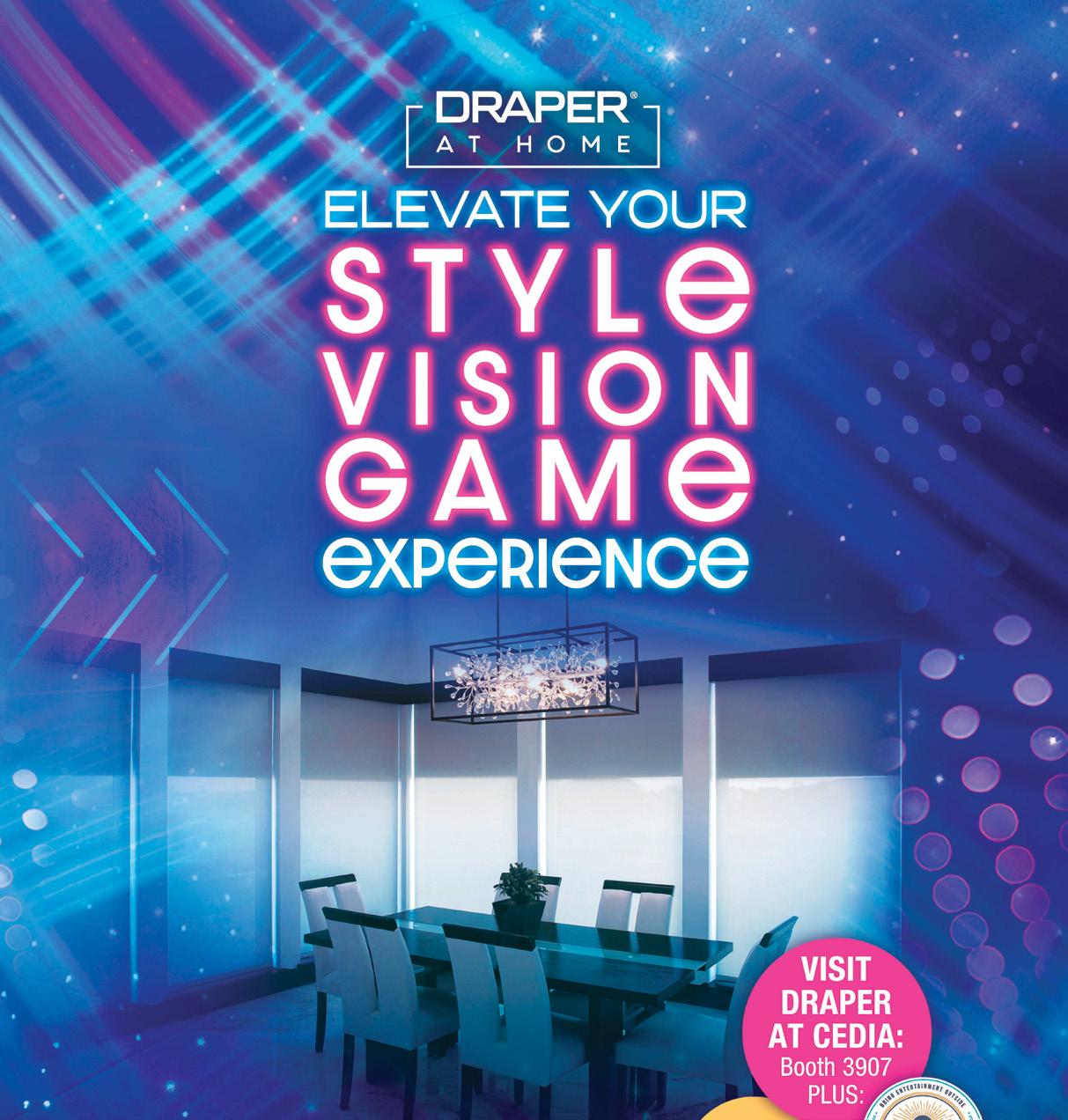



Leon Speakers and Calgary-based design firm Mera Studio Architects have co-created the all-new Mera Sound Sconce, a wall-mounted product that offers both full-range audio and dimmable integrated lighting. Its artisaninspired design is supported by Leon’s 33UX audio platform and components and diffused LED lighting by American Lighting.
Considered design leaders in their respective industries, the two teams began collaborating together following a high-design project where Mera utilized Leon’s artoriented Ente SoundTile.
“Our idea for the sound sconce was to highlight and not hide the speaker — to think of it as an element in the room capable of transforming the experience via sound and light,” said Mera Principal Architect Tara Marshall. “All too often, speakers are the last element considered in a space. We wanted to rethink the speaker and come up with a design that would shift the concept of the speaker from an afterthought to a forethought, and the duality of a speaker that can illuminate a room just seemed to make sense. Why not integrate sound where you might already install a light? From there, we set out with Leon’s team on the challenge of creating a speaker that was equally as beautiful as a light.”
By Walter Joseph
Leon Founder and President Noah Kaplan said that his company has learned a lot through their collaboration with Mera. “Both of our organizations are committed to ending the disconnect between design and technology,” he said. “Through our work with Tara and Meghan, we have gained a new perspective on modern architecture and the possibilities for the future of AV and technology — a future led by thoughtful, collaborative design.”
Contributing to both the character and materiality of its surroundings, the Mera Sound Sconce provides “dual illumination,” with light emanating from behind both its shell and its grille. Its magnetic grille attachment ensures a seamless aesthetic that is suitable for both retrofit and new applications, the company said.
The new sconce collection is available in three coordinating colors: Linen, Black Sand, and Clay. Each sconce features a cast-aluminum shell, handmade highperformance audio components, custom-knit bouclé grille fabric, and a textured powder-coat artisan-inspired finish.
Perfect for architectural audio in dining rooms, entertainment spaces, and bedrooms, or as an elegant addition to a piece of art, the Mera Sound Sconce elevates the character of any residential space while visually complementing textiles and colors — both trending and classic. Commercially, the sconce’s myriad lighting possibilities and high-end audio make it ideal for restaurants, hotels, lobbies, and storefronts. x

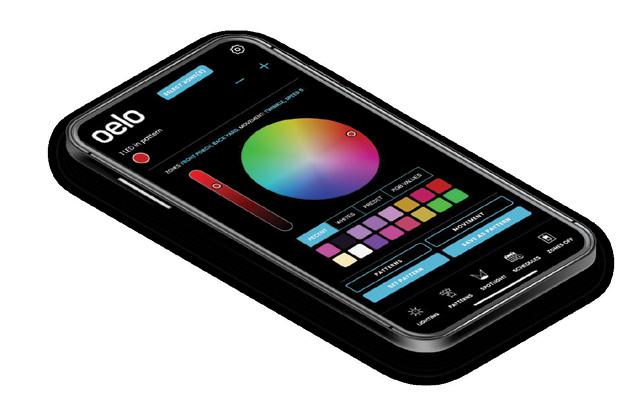





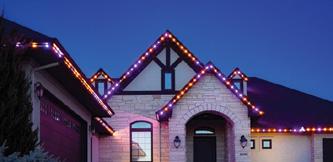
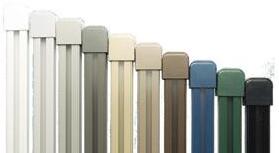


By Jay Basen
Aqara has launched the Aqara Hub M3, a multi-protocol Matter controller with edge capabilities. The Hub M3 expands the Aqara ecosystem by enabling the connection and management of a growing number of Matter devices from Aqara and other brands.
The Hub M3 is designed to be the cornerstone of Aqara’s Matter-enabled smart home ecosystem. It supports a wide range of wireless communication protocols, including Zigbee 3.0, Thread, Wi-Fi, Bluetooth, and infrared (IR). This multi-protocol support allows users to integrate third-party Matter devices into the Aqara Home automation ecosystem, creating a unified and comprehensive smart home experience.
The Hub M3 also supports both 2.4GHz/5GHz dual-band Wi-Fi and includes a Power over Ethernet (PoE) connection for extra flexibility and stability.
One of the key features of the Hub M3 is its edge capabilities, which enable local control and automation. The hub’s substantial eMMC storage allows for local, end-to-end encrypted data storage and locally processed automation. This reduces system latency and minimizes reliance on cloud services, ensuring continuous control of the Aqara system even during cloud service or internet outages.
In the future, the Aqara app will be able to connect locally to the Hub M3 during an outage; it will be added in a firmware update to the Hub M3.
Also planned for a future firmware release, the Hub M3 will offer dynamic leadership and automatic backup capabilities. For example, when an extra Hub M3 is deployed to the network, automations can be automatically mirrored, preparing the new hub to take over the network if the leading M3 fails. Additionally, the Hub M3 will eventually support binding between Aqara Thread devices, allowing some
automations to remain functional even without a hub.
Other notable features of the Hub M3 include a two-way, 360-degree IR blaster, the ability to function as an AC thermostat when connected to an Aqara temperature sensor, and enhanced functionalities for Aqara devices. The IR blaster can also detect when commands are sent to an IR-controlled device using the device’s own remote control and leverage this information in its own control of the device.
The hub also features a 95dB speaker that can be used as a siren for the Aqara Home Alert System or for custom voice announcements.
Aqara has emphasized the M3 hub’s focus on privacy, noting its intentional lack of a camera or microphone. The hub also supports local, endto-end encrypted storage of device logs and user data, ensuring that home events remain private.
The Aqara Hub M3 offers more than the usual range of services provided by professional smart home processors in that it boasts local processing that allows for continuous operation during an internet outage, the ability to integrate third-party smart home devices, and failover to a secondary Hub M3 in the event that the primary Hub M3 fails.
Aqara sent me a pre-release version of the Hub M3 to test. The Hub M3 was easy to set up. I simply plugged it in using a power supply and USB-C cable (not included) and scanned the QR Code on the Hub M3 using the Aqara app. I then connected it to my home’s Wi-Fi network. The Aqara app walks you through the process, and in this case, it was assisted by voice prompts from the Hub M3’s speaker.
After updating the firmware on the Hub M3, I was able to easily connect the Hub M3 to Apple Home through Matter as a bridge. With this done, the Aqara app walked through adding an Aqara Smart Plug and Wireless Mini Switch that
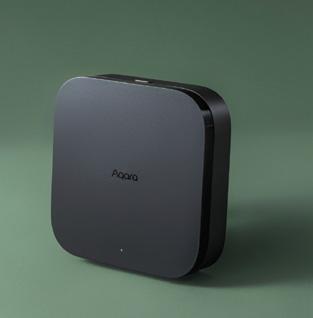
was connected to the Hub M3 for testing as devices in Apple Home.
I also tried the Hub M3’s ability to integrate third-party, Matter-compatible devices into the Aqara ecosystem. However, what I discovered is that there are only a few Matter-compatible devices that can be integrated at the product’s launch. Support for additional third-party devices will be added over time. Currently, only the following third-party devices are supported: single-color, CCT, and RGB CCT lights from Philips Hue connected via the Hue Bridge; electrical switches and dimmers from Leviton; and thermostats from Google Nest.
I also worked with the Hub’s IR blaster, adding control of my TV to the Aqara app. That worked well, but I do wish that the Hub M3 included support for wired IR emitters so the Hub M3 could be hidden in an equipment closet instead of needing to be placed within sight lines of IRcontrolled devices in a home.
Overall, the Aqara Hub M3 represents a significant step forward in the company’s smart home ecosystem. While users will have to wait for some features to be released in future firmware updates, the capabilities available today and those promised for the future make this a serious contender when choosing a smart home hub for a home. x
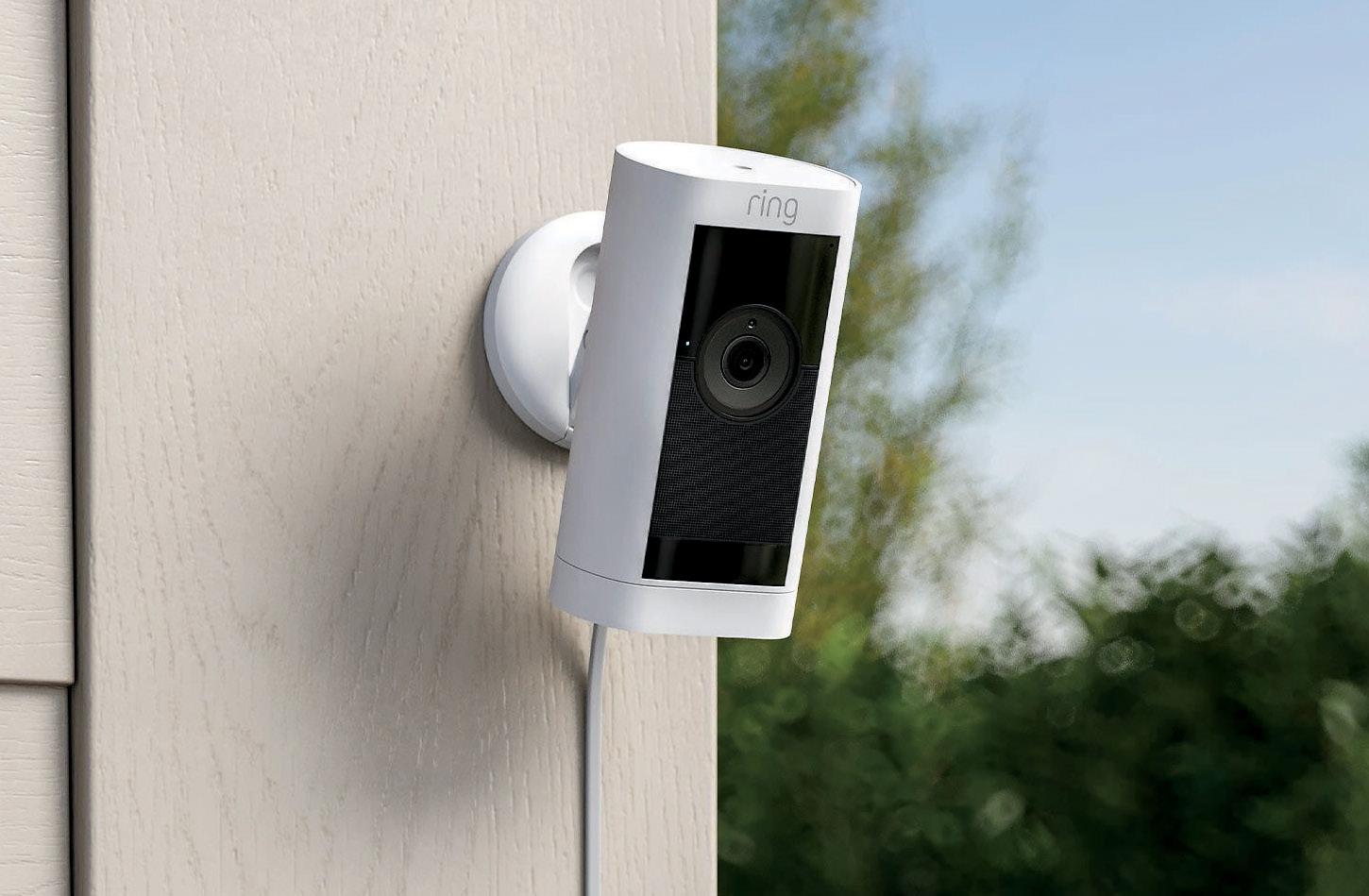
By Charles Warner
Earlier in the year, Coastal Source celebrated its 15th anniversary with a partner event at Orlando’s Kennedy Space Center and the launch of its new Bollard 1000 Speaker Series and EVO Lighting Series for outdoor installations.
The new modular Bollard 1000 Series builds upon the Coastal Source’s 10.0 Bollard Series by improving power handling, clarity, and tonal accuracy while maintaining bass response in two styles of sealed enclosures. The modular Coastal Source EVO Lighting Series light engine will come in three configurations — standard power, high power, and tunable.
Leveraging their 12.0 Line Source Bollard, Coastal Source’s Bollard 1000 Series uses a weatherized ribbon tweeter in all models to deliver hi-fidelity performance. The all-new acoustic suspension subwoofer design delivers 100% increased power handling over the 10.0 Bollard Subwoofer and yields tonal accuracy, improved dynamics, and bass response that has a clear impact.
The new elliptical cross-section enables the 1000 Bollard series to maintain a slim profile toward the listeners while adding 33% more acoustic volume to the cabinet, which contributes to the bass performance of the sealed enclosure and acoustic suspension design.
There are two subwoofer models in the series — B1300 mini bollard subwoofer and B1500 bollard subwoofer.
The fully sealed, acoustic suspension design of the Bollard 1000 Series eliminates the potential water egress into the 10.0 Bollard bass-reflex design, making the enclosure more resistant to
water intrusion. Designers have relocated the bass driver from below the ground on the 10.0 to above the ground in the Bollard 1000 series and have eliminated the belowground seam in the bollard cabinet.
With five modules (two satellites, two subwoofers, and one vault), the Bollard 1000 series products can be built into numerous acoustic configurations. The new Bollards also bring an all-new 16 AWG UniConnnect system to the market; no more Y-cables are needed.


The high-power LED within the EVO Lighting Series will deliver the light output of an MR16 bulb from a fixture that is 50% smaller, enabling lighting designers to discretely place the fixtures so the light effect is seen, but the fixture remains hidden. The tunable module will provide landscaping professionals with system design control of white color tuning and brightness control via an app. The EVO Lighting Series offers partners more options to customize heights, optical lenses, and finishes on both directional and 360-degree fixtures.
The EVO light module has more output capability than an MR-16 (5W EVO 560 versus 6W MR16 516 lumens), and it has the same wide beam angle (up to 80 degrees). The
compact, integrated design and availability of a wide selection of shrouds and lenses enables improved glare control, as well.
EVO is 50% smaller than MR16 bullet, so the light effect is seen, but not the fixture, and it is designed with Coastal Source’s patented Plug-nPlay CMC connector system and can easily be integrated with any other Coastal Source fixtures in a lighting system design.
The integrated EVO LED module is available in two output levels (5W and 1W), two dispersions (direct and 360+) with two color temperatures (2700K and 3000K), and enables designers to control the light output as required. x



By Jeremy Glowacki
Lutron Expands Architectural Downlight
Portfolio With Ketra and Rania D2

Lutron Electronics has introduced all-new luxury architectural downlights, the Ketra D2 and Rania D2, featuring a 2” aperture downlight, diecast aluminum trims that are honed to a nearly invisible edge, a tighter control method for making micro-adjustments, slimmer housing for installation, and lower price points than the predecessor Ketra D3 downlight line.
Lutron has long sought to harmoniously bring the outdoors inside, blending natural and electric light seamlessly while accentuating the beauty of the interior — from fabric colors and textures to art and even the skin tones and features of those enjoying the space. With the
launch of Ketra D2, users can now experience the characteristic elements of Lutron with dynamic lighting that adapts to various moments throughout the day and sets the desired ambiance in the form of the brand’s smallest and most flexible downlight offering to date. With both new downlights, people will experience a high quality of light in any space in the home.
“Quality of light means more than just measuring color rendering index (CRI) or dimming capabilities,” said Ben Bard, VP of luxury residential business at Lutron. “It’s about a light source’s ability to perfectly replicate natural light across a wide spectrum and then
maintain that exact light output over its lifetime. Ketra uniquely delivers this quality of light and it’s now available in a 2” aperture. Additionally, Rania’s unique light engine sets a new bar for white light in the industry.”
Lutron’s luxury lighting portfolio is anchored on elevating the experience and quality of light in the home. Ketra and Rania light sources work seamlessly with Lutron’s premium lighting controls and shades to create personalized spaces. Both fixtures are also wirelessly controlled, saving time and money while reducing the space needed for panels. As the market continues to shift toward ‘quiet ceilings’ featuring increasingly discreet recessed fixtures
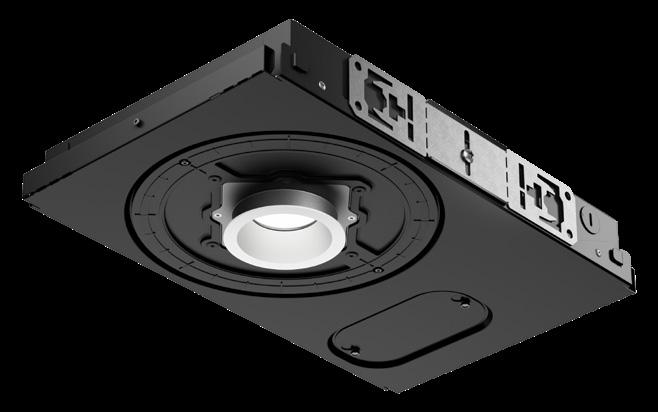
and a desire for consistently reliable lighting performance, the D2 represents one of the most versatile and advanced architectural lighting solutions to date.
While Ketra D2 retains Ketra’s reputation for providing quality of light and unique experiences for homeowners, along with the new 2” aperture, new of trims and colors, ultraslim housings for maximizing ceiling heights, and a new hot aiming system, the new Rania line provides more options to designers, integrators, and homeowners that want more flexibility in their lighting.
According to Lutron, Rania is second only to Ketra in its ability to replicate natural white light more faithfully than any other light source. For example, Rania D2 includes a three-channel emitter that is designed to produce a range of white light from incandescent warmth to midday sun — all in a single light engine. To enable designers to mix and match Rania D2 and Ketra D2 within a lighting layout, both lines utilize the exact same slim housings, architectural trims, refined hot aiming system, and wireless communication.
Taken together, Lutron said, these products open new possibilities for builders, designers, and custom home integrators who deliver innovative lighting experiences to homeowners and transform residential spaces with the highest quality of light.
During a dealer, designer, and press preview of
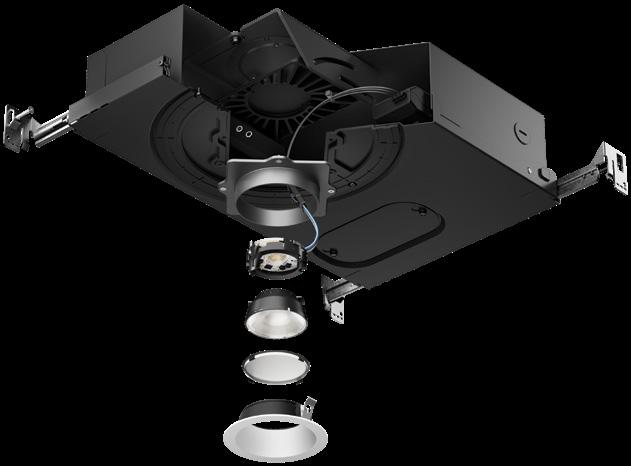
Ketra and Rania D2 at Ketra’s design and manufacturing facilities in Austin, TX, this week, the Lutron management team provided a deep-dive into the new innovations, providing hands-on demos and insights into the development of the products.
Rick Walsh, senior product manager at Lutron, said the goal of D2 was to reimagine, reengineer, and redesign every detail of “this type of fixture,” creating “something quieter, more artful, and more precise than we’ve ever done before.”
Walsh explained that the new D2 downlight is a completely modular platform with interchangeable parts and pieces to adapt to the needs of the space. “We had to make amazing breakthroughs in optical technology to create a smaller aperture to allow the fixture to disappear into the ceiling,” he said. “We’re bringing forward meticulously diecast aluminum trims that are honed to a fine knife-edge, invisible edge painted to maintain a smooth flush-toceiling appearance, so you can harmonize a ceiling’s aesthetics with the design and feel of the space.”
Ketra D3 was designed as a ‘tool-less’ fixture when it came to aiming and adjusting beam angles. With the smaller aperture of D2, designers felt that using a commonly available tool would provide installers with a tighter control method for aim and focus, enabling hot aiming (aiming while the fixture is turned on) and lockable positioning that makes microadjustments more ergonomic and intuitive.
“This is something that really allows you to leverage Ketra’s TruBeam optics, so the light ends up where you need it and nowhere else,” Walsh said.
Lutron also introduced a new line of lens accessories to allow designers and installers to position the light either at the optic or at the trim — two lenses can be used to refine beam control.
Walsh explained that the goal of providing two different “ultra-slim” housings was to address construction challenges, particularly in MDU buildings where ceiling space is often at a premium. “One is a 2” high fixed for wall-wash housing for those ultra-slim applications, and [the other is] a 3.5-inch high adjustable housing to get the right fixture in the right spaces despite the tight construction tolerances.”
Ketra D2 is more affordable than the existing D3 line with the adjustable fixture listed at $950 and fixed at $850 list.
As for Rania D2, the goal, Walsh reiterated, was to “make the essential aspects of this [lighting technology] even more accessible to more homes, more spaces, and more projects. Things like wide CCT [correlated color temperature] range and the ability to faithfully echo an incandescent and produce naturally feeling white light.”
Walsh reminded his audience that typically today, outside of Ketra, you have to “kind of choose” between a warm dim option that lets
you dim down in those quieter settings or a tunable option to bring natural light into a space.
“At Lutron, we don’t think you should have to choose,” Walsh said. “We challenged our engineering team to think differently, to think broader, to take an unparalleled and innovative approach to white light and expand that offering to our D2 platform.”
The three-channel solution, Rania D2, delivers a wide CCT range, “replicating natural white light more faithfully than any other light source other than Ketra,” Walsh said. “From incandescent warmth to mid-day sun,” Rania has a CCT range of 1800 Kelvin all the way up to 5500 Kelvin to match that mid-day sun option, “in a single fixture, a single light engine.”
Rania leverages the same platform as the Ketra D2 so the two fixtures can be mixed and matched within the same project, matching visually and using the same Clear Connect RF wireless technology. Each fixture is individually addressable to minimize zoning and reduce overall costs of wiring and control. Both Ketra and Rania D2 have the same beam angle options with the same tool precision aiming mechanism. Both share the same 2-inch and 3.5-inch housings. Both have those refined knife-edged trims.
The differences between Ketra and Rania are that Ketra has a CCT range starting at “candlelight” at 1400K all the way up to an “arctic sky” 10,000 Kelvin, while Rania has a CTT range from 1800K for “incandescent warmth” to that 5500K for a “mid-day sun” effect. Lumen output is 1200 and 1000 for each of the Rania fixtures.
The list price for Rania’s adjustable fixture is $725 and $625 for the flange model. Learn more about Rania at luxury.lutron.com x

Here are some highlights from the Lutron/Ketra presentation in Austin:
We’re here today to tell you about what I call scalable perfection in intelligent lighting. We believe that this is the most impactful launch that maybe the company’s had since since the 2008 with the launch of Sivoia QS. ”
~ Ed Blair, Lutron President
This is the biggest Ketra product news since our acquisition [of the brand] in 2018.”
~ Melissa Andreska, Lutron Chief Corporate Brand Ambassador
Inside each Ketra light source is a custom chip that is solving complex scientific equations at a 60 times per second update rate so that RGB is handled correctly. We’re the only ones correcting for aging with actual optical feedback running for life so the light stays beautiful. We won’t ship a product until every part is tested separately and together.”
~ Ryan Bocock, Ketra Director of EE
Today’s [interior] light just does not feel natural to me. A lot of people use one single color all day. That is not natural. Natural light is the sun. Natural light is moonlight. Natural light is fire light. That’s natural and that’s dynamic. It changes. [To replicate natural light] we had to build a custom imager because we needed the optical performance. We had to invent a whole host of optics to be able to do the color mixing (homogenizing white light). We also needed to design the custom integrated circuits to maintain the light [over time as the LEDs age] and also to precising control the light.”
~ Horace Ho, Ketra COO
One of the challenges of getting very tight beam angles from mixing white out of red, green, and blue is that you oftentimes get color breakup. Lutron and Ketra have a variety of beam angles from 10, 15, 25, 40, 60, and 90 degrees, and we’ve engineered the lights to always be clean and crisp and precise. One of the challenges of getting very tight beam angles from mixing white out of red, green, and blue is that you oftentimes get color breakup. Lutron and Ketra have a variety of beam angles from 10, 15, 25, 40, 60, and 90 degrees, and we’ve engineered the lights to always be clean and crisp and precise.”
~ Cecilia Ramos,
Lutron Senior Director of Architectural Market
Artafex isn’t just a new DMF product line; it’s a philosophy. In ancient Latin, it meant “artisan,” a master of their craft, someone who poured their heart and soul into every creation. It’s a commitment to quality and a celebration of the enduring value of craftsmanship.
Artafex is designed to meet the demands of modern custom integrators and elevate their projects to a new level of elegance and style. It is exclusively available to integrators.
September 5-7, Booth C911
Artafex modules feature True SpectrumTM technology to provide industry-leading color rendering and richness.
Dedicated angeless housings can be installed using conventional drywall taping techniques to achieve a Level 5 nish.
Stunning trims machined from solid blocks of brass provide elegance, durability, and a low-glare nish.
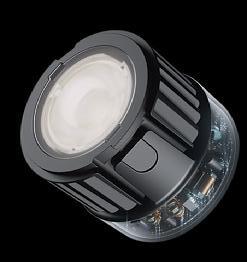


By Jeremy Glowacki
On the eve of the third-annual Lightapalooza conference in Phoenix this past spring, I pulled my last incandescent downlight bulb out of storage. The next time a bulb burned out in my home’s builder-grade can lighting, I would be stuck without a replacement.
For many years, I had resisted the transition to LED or even halogen for my home’s in-ceiling lighting fixtures, but I now knew I needed to start planning for that inevitable switchover.
Several trips to hardware stores and big-box retailers had left me without an acceptable LED replacement for my 6-inch can lights. Though most of the bulbs I tried looked OK during the day, none dimmed down warmly (via my Control4 lighting control system) into the amber color range that I loved about incandescent lighting.
So, off I went to Lightapalooza, where I hoped to gain more insights and recommendations from veteran custom integrators with experience in lighting fixture installation. To the rescue came the folks at DMF, who offered to send me a sample of retrofit DID2 Series downlights that they had been selling to the custom integration channel since 2021.
When I got home, the team at DMF asked for my ceiling heights and lighting trim sizes and soon sent an Edison bulb adapter, DID2 lighting module, and both a 6-inch and 5-inch DRD2T trim ring just to make sure that we had the right size and that I was happy with the new fixtures before shipping me any more.
Once I learned how to remove my old trim rings by releasing two very dusty springs from inside the existing housing, I was ready for my first DMF installation. It seems so rudimentary
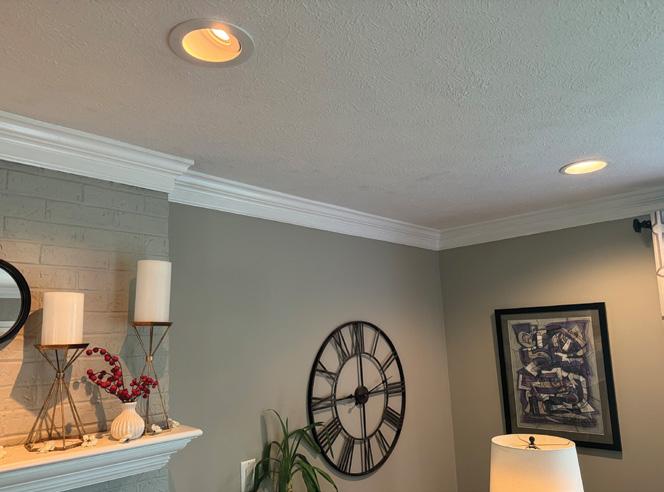
now in retrospect, but when you’ve never done more than replace a bulb in a can lighting fixture, you are not entirely comfortable with the way you would install DMF’s trim rings that utilize spring clips.
For example, I did not realize (until after a video chat with DMF’s Mike Libman) that the two pairs of metal tabs inside the existing can light housing would be needed to guide the spring clips from the DMF trim into the housing. I had mistakenly thought that the spring clips were designed to be inserted into holes inside the housing, so I struggled mightily to make it all work. Once I overcame that hurdle, the installation literally took a couple of minutes.
DMF’s Edison bulb adapter screws in just like
The DID4 aimable lights were just as easy to install, but also require pivoting of the fixture to the proper angles at the fireplace.
a light bulb, but instead of a light bulb on the other end, it has a wire with a little clip that connects to DID2 downlight module wire. One of the trickiest parts of the installation is attaching the green ground wire to a piece of metal within the old lighting can.
The DMF trim rings and modules feel solid and extremely well-built. When I powered up the new DMF fixture for the first time, it was right beside an existing incandescent can light, and at the fixture’s lowest lighting percentage (about 5%) you could barely tell the difference in the warm amber glow between the traditional bulb and new LED fixture. I was sold! I was overjoyed that my future would not have to be night-time overhead lighting with the blue glow of a bus station.
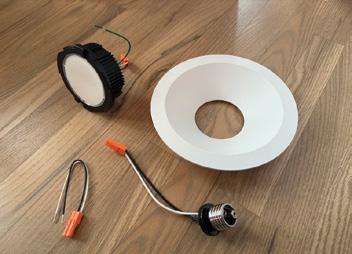
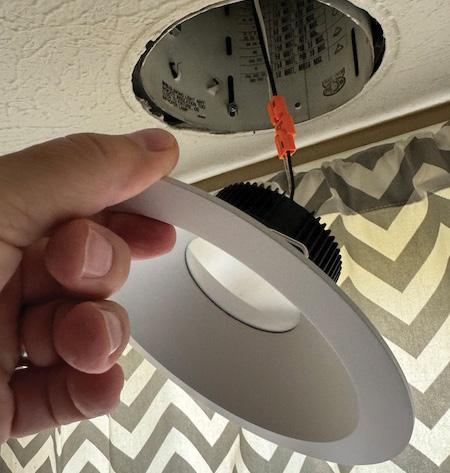
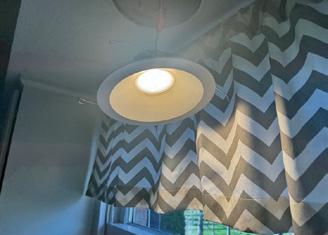
Subsequently, I’ve learned more about correlated color temperature (CCT) in lighting, understanding that a CCT of 1400K is considered “candlelight,” while 5500K is a “midday sun,” and 10,000K as comparable to “arctic sky” brightness. The sweet spot for me is 1800K, which closely replicates the “incandescent warmth” that I desired. With that in mind, I checked the stats on the DID2, finding out that they have a CCT range of 3000K–1800K, which may not be ‘mid-day sun’ level of brightness (but plenty bright enough for my home) and more importantly hit that ‘incandescent warmth’ at the dimmer end of the scale.
After counting up the number of fixtures I wanted to replace, DMF was generous enough to supply 20 sets of 6-inch trims, DID2 modules, and bulb adapters. Only after I completed the installation — two weeks later — did I realize that I had failed to count three fixtures. When I sheepishly mentioned my error, I also told DMF that I had asked the company’s competitor AiSPiRE/WAC to send me two prototypes of their newly announced aimable retrofit fixtures to replace the “eyeball” lights in front of my fireplace hearth. I had been unaware that DMF also had an aimable options to match the DID2, called the DID4. Although I found that AiSPiRE/WAC aimable fixtures were equally well built and beautiful, they didn’t perfectly match the DMF DID2 trim design or the color temperature, so I accepted DMF’s offer to include two DID4 fixtures with the three DID2 additions they were sending. I will find another location (likely in my home theater) for the AiSPiRE/WAC fixtures because they are great products as well.
Once I got in the rhythm of installing the DMF trims and lighting modules, the process
was ridiculously simple. The DID4 aimable lights were just as easy to install but also required pivoting of the fixture to the proper angles at my fireplace. I loved the way the DID4s modernized the ceiling, replacing the dated-looking “eyeball” spotlights that had seen better days.
Once the installation was complete, I walked over to the wall and hit the ‘Day’ scene through my Control4 lighting control system. The DID2 lights came on with a smooth ramp and their full brightness bathed the room in a nice clean light. I then tested my ‘Evening’ scene and bathed in the amber warmth which was about as close to dimmed-down incandescent light as I’d experienced. In fact, it sent me on a quest to find a new LED bulb for my decorative table lamps and dining room’s decorative fixture to match (I found an “antique” bulb that did the trick).
I started playing around with the dimming to get a sense of how well the DMF lights would

do at low levels. The biggest challenge was matching the DID4 adjustable (aimable) lights in front of the hearth/fireplace with the DID2 fixture flush to the ceiling. It gave me just the smallest glimpse of the challenges of designing “wall wash” and other aimable fixtures into a lighting system.
After living with the DMF system for more than a month, I could not be happier with the performance (in lighting), the smooth performance when adjusting dimming levels, and the lack of flicker with the control system. DMF has created a very approachable product for the technology integrator to get into the lighting fixture game and help save homeowners like myself from having to choose inferior LED bulbs or pancake fixtures from big box retailers that don’t provide warm dimming or even quality light in the daytime. x

By Jeremy Glowacki
Most integration professionals will agree that the basic foundations of a smart home must start with a well-designed wiring and cable, home network, and power management infrastructure. While there are certainly flashier technologies available to homeowners, without these essentials, the connected devices that comprise even the most basic smart home are vulnerable to inconsistent performance, outages, and even damage.
To learn more about the foundations of the smart home, Residential Tech Today reached out to subject matter experts in wiring and cable, home networks, and power management and asked what to consider in your next installation.
Wiring and Cable
It’s a bit of a fool’s errand trying to separate wiring and cable from the home network, as the two are almost always intertwined within a smart home. Case in point, when asked about the importance of wiring and cable, Kordz Managing Director James Chen couldn’t avoid referencing home networks in his answer.
“Integrators might know that hardwiring is more reliable, stable, and secure than Wi-Fi, but it’s likely that many of their customers don’t,” he said. “It, therefore, behooves the integrator to explain to their clients how, like anything of quality in their homes, that it provides a bigger return on investment.”
greater,” he said. “Also, make sure the cabling you are putting in is compliant with current performance specifications. This can be difficult, given the constant evolution of cabling technologies and standards, so lean on your cabling supplier to help keep you up to speed.”

Chen added that the quality of cable makes a significant difference to the performance of connected systems. Higher quality cable is also usually easier to work with and install, which saves time and keeps customers happy, he noted.
“Look for cable that’s been individually tested and third-party certified or verified,” Chen suggested. “It is so easy for any brand to tell you that they are the best, but much harder to do so when they have to prove themselves through independent certification from organizations such as UL, HDMI, HDBaseT, and DPL. Certification is your seal of approval.”

With this context in mind, Chen explained that it is essential to first know which types of smart devices — and how many of them — will require a cabling connection. “If in doubt, run extra cable, as the cost of doing it later will be far
Cody Crossland, VP of sales and marketing for Blackwire Designs, a distributor in the custom installation and Pro AV markets, added that it’s important to think about not just today’s needs but the future, as well, noting that the only way to truly “future-proof” a cable system is to install a pathway (conduit) that allows you to pull more cable or replace cable easily.
“Technology upgrades will happen much faster than changes to the building itself, and
being able to accommodate those changes easily relieves a lot of stress for both the integrator and the client,” he said.
More specifically, Crossland recommends installing fiber. “Single-mode fiber can easily span 1000 feet, is easy to terminate, and is not susceptible to EMI and lightning,” he added. “Additionally, it is cost-effective compared to several higher tiers of copper; a single fiber can support 1GB, 10GB, and beyond.”
If, as most professionals will contend, wiring and cable are the “backbone” of a smart home, then the home network would be akin to its central nervous system. The first step toward making sure that a home network is up to the task, says Access Networks Director of Sales Jon Peckman, is understanding client needs and expectations.
“Consumer-grade, professional-grade, and enterprise-grade networks all have their place in today’s homes,” he noted. “Establishing expectations will help you choose the right solution for the client. The client needs to understand that as they raise the bar on their home’s capabilities (control, distributed AV, lighting, shades, security, surveillance, and all aspects of home automation), choosing a network that can meet those requirements becomes increasingly important. Selecting the right network impacts the entire connected experience.”
Peckman noted that a good place to start is by
providing the client with access point layouts and establishing coverage in the home so they have a clear picture of what their coverage will be like, especially in complex construction situations.
Blackwire’s Crossland agreed that “proper planning, proper products, and proper configuration” go a long way to installing a secure and robust network that “just works.”

“The network is the most important thing, and while not ‘sexy’ like a shiny thin TV, outdoor waterslide for the pool, or an impressive granite countertop, if the network goes down, everyone is unhappy,” he said. “Keep in mind that not everyone will watch TV, use the pool, or cook in the kitchen every day, but every single person in the home will use the network every single day. It must ‘just work’ without issue.”
Crossland makes the case for installing commercial-grade networking gear that offers “category-leading” features and warranties. “Our products from Ruckus and Netgear offer a lifetime warranty in nearly all cases and have unmatched performance capabilities for Wi-Fi and switching. Products that have unique features like multiple WAN and cellular capabilities from Peplink give our integrators and their customers choices they would not otherwise have. The products are only half the battle, so ensure that the cables are correctly terminated with products like Simply45’s offerings and tested to ensure you can receive the maximum capabilities with Fluke testers.”
garnered most of the attention with homeowners resorting to generators and more recently battery backup to keep their homes operating during power outages. He contends, however, that outages (power reliability) actually should be the least of their concerns.
“The Internet of Things has transformed our homes into quasi computers,” Laikind explained. “Everything from doorbells and water faucets, light fixtures to refrigerator doors comes with a microprocessor. These devices and myriad others rely on constant and consistent power quality to perform at their optimum levels and provide us with the conveniences they were intended. To achieve this, a home requires a zero transfer online UPS with enough capacity to protect home devices from large electrical transients and feed them with clean, stable, regulated electricity.”

While covered last in our list, power quality and power reliability may soon become the most important smart home foundation category due to the increasing inconsistencies of our aging power grid, more occurrence of extreme weather incidents, and the rising use of solar panels.
RoseWater Energy VP of Sales David Laikind noted that, as a society, power reliability has
designs its isolation transformers more specifically to separate audio video and control equipment from powerline noise and distortion. Main says that isolating the entire AV and control system from noise, artifacts, distortion, and harmonics that are present on the voltage line will have the most significant impact on a home’s power quality.

“Too much noise on the powerline robs an AV system of definition and detail — virtues that influence the system’s overall performance,” he said. “Further, artifacts, distortion, and harmonics on the powerline will cause excessive heat to build up in the power supplies of sensitive AV components, which can lead to equipment failure or operational issues with the entire system. By understanding the detriments of dirty, unstable power, integrators are better equipped to take the necessary precautions. By applying appropriate power-quality solutions, they can assure their clients of an AV system that performs optimally and without continual maintenance.
Laikind suggests that integrators should lead a conversation about power management by identifying the client’s short- and long-term power objectives. Are they concerned about managing their grid usage by offsetting consumption with batteries during peak billing times? Is this a frequently unoccupied vacation home that needs reliable power to prevent downtime or damage? Do the owners work from home and need power protection to stay productive? Do the clients place a high value on a wine cellar, a high-end home theater, an automation system?
“By uncovering a client’s lifestyle, expectations, and concerns, the integrator can determine if a single device, a couple of devices, or a whole-home power management system is right,” he said. Torus Power, led by its president Kevin Main,
Custom integrator Jason Barth, CEO of The Premier Group in Carmel, IN, says that his company typically recommends a threepronged approach that can be achieved at a variety of price points.

“The first necessity is proper surge protection for all system components,” Barth said. “This can entail either a simple surge-protected outlet behind a TV, or a component-based surge protector in an equipment cabinet or rack. We sometimes complement this with an online double conversion UPS for ‘perfect’ 120V/60Hz power 24/7. This is not considered an optional item, but a highly recommended item for the main IT equipment, including the network, whole-house control processor, and surveillance systems. This approach, including the UPS, mitigates lockups caused by very quick brownouts and voltage sags or spikes. Lastly, we specify the appropriate…IP power management device to enable remote reboots of virtually any component on the system. This combination of products has proven extremely valuable to our service team.” x
By Danya Golan
With applications spanning across social media, email, video communication, streaming media, and AI chatbots, the profound influence of cloud-based AI is undeniable. However, as we witness the ongoing expansion of the home security market — forecasted to surge nearly 20 percent annually through 2030 — critical inefficiencies within cloud-based AI become apparent.
The solution lies in processing AI at the edge, a transformative approach that enhances efficiency and responsiveness by bringing intelligence closer to where it is needed most: within the confines of our clients’ homes.
Smart home integrators understand the concept of “the edge” better than most. It’s where much of their technology has always lived: IP cameras, occupancy sensors, alarms, and access controls. Once network-enabled, these smart home devices become many of the “things” on the Internet of Things (IoT), doing their work far from control rooms and data centers.
With the advent of AI, many industries have embraced edge computing to put more powerful IoT devices in the field closer to where data is generated and used. For example, industrial manufacturing uses AI alongside robotics to identify issues more quickly on the shop floor. Healthcare uses AI embedded in imaging systems to spot life-threatening conditions faster and improve patient outcomes.
In the case of home security, detecting threats and initiating a response — even before a
control center can act — requires AI built into security systems themselves, specifically a new class of AI processors designed for smart cameras and video management solutions.
Security systems that aren’t equipped with AI typically rely on motion detectors to identify threats, which can lead to many false alarms due to branches moving in the wind, rain, animals, etc. With AI, threat detection becomes 100% accurate, and no cat or leaf will be misidentified as human — completely eradicating false positives and false negatives.
Because home security cameras often do their work in the dark, they need AI processors that can operate in low-light scenarios by drastically enhancing the picture before interpreting what they see. AI processing on the device can allow for images that are dark to become clear and visible.
For home security system users, night is one of — if not the most, critical time for an effective security system — and this breakthrough allows for security systems to remain consistent and effective, even when in a dark area.
Moving AI to the edge of home security requires a different way of processing information. Today’s edge AI processors are designed to handle neural networks, which manage data like synapses in a brain, rather than forcing it through a linear pipeline.
In practice, such an efficient architecture is especially fitting for security systems. Not only do AI processors run AI algorithms more rapidly, but they do it using less power, which is
important when installing cameras throughout a home and property. The most important thing: no need to send video data to cloud servers for processing.
There are a couple of ways to deploy edge AI in smart homes. It can be integrated into devices themselves (cameras, sensors) or into a gateway system located in a data closet (a video management system — VMS or network video recorder — NVR). Such gateways, often with multiple edge AI processors installed, take video streams from regular IP cameras and apply AI algorithms for image enhancement, detection, and identification.
Smart home professionals play a significant role in deploying edge AI by understanding owners’ requirements and applying the best available solution. Companies like Hailo manufacture AI processors that are purposedesigned to run AI algorithms quickly and accurately while using less power and eliminating the need for active cooling, making them suitable for smart homes.
The AI processors are divided into two classes designed to answer all AI needs of a home security system: AI vision processors that can be integrated directly into smart cameras and AI accelerators that are fitted into gateways and NVRs to support the host processor with AI computing power. For example, Snap One’s Luma Insights Platform is powered by Hailo-8 AI processors to provide AI-enhanced security to Control4 automation and networking systems.


Actual use cases of edge AI in smart homes typically fall into two buckets. The first involves making decisions and acting faster. Think of a home in a busy neighborhood or city. When an edge AI security device detects suspicious activity, for example, it can immediately trigger alerts or initiate security measures.
The second bucket comprises solutions to intelligently process data for later evaluation. The fact is, despite advances in AI, not all home security video can be analyzed in real-time. Much is stored and examined — by the homeowner, integrator, or service provider — if an event is noticed. But with edge AI, such video can be processed, analyzed, and categorized before it’s stored, so when someone
must go back and look for a person or event, it’s far more efficient. For instance, they can apply search terms to processed and stored video (show all “unknown persons” or “men wearing hats”) rather than pore through all the footage.
Ultimately, use cases are driven by need and budget. Certain critical, real-time security solutions benefit from edge AI built directly into new cameras and other detection devices. Others, including existing camera deployments, are suited to cost-effective edge boxes for aggregating and analyzing streams. Most home security solutions will fall in the middle, with some combination of AI devices and aggregation boxes.

As smart home integrators navigate the dynamic home security landscape, incorporating edge solutions ensures that systems are not only efficient but also tailored to every homeowner’s individual needs.
The ability to deploy AI directly at the network edge not only improves response times but also minimizes reliance on external servers, contributing to a more streamlined and reliable security infrastructure. Whether it’s the immediate detection of suspicious activities or the intelligent processing of stored data, edge AI is a cornerstone in the ongoing evolution of sophisticated and responsive home security solutions. x
By Jennifer Kent
While the benefits of residential energy solutions are far-reaching, with direct benefits to the household’s energy bills, getting consumers to adopt and participate has been a challenge in the energy industry. Familiarity with and participation in utility rate plans are low nationwide, despite their relatively long history.
Energy devices such as smart thermostats, used in coordination with the right incentives to drive program participation, can deliver insights to utilities on how energy is used in the home. However, despite the universal need to control electricity budgets, a minority of households consider themselves to be highly familiar with energy devices. The current state of the energy markets has not yet delivered on the potential, and utilities don’t have much insight into household energy usage behind the meter.
• Currently 16% of U.S. internet households have a smart thermostat, and 25% plan to buy one in the next six months.
• Among households who do not have and do not plan to purchase a smart thermostat, inertia is a key factor: 72% feel that their traditional thermostat works well enough.
Other key barriers include data privacy concerns regarding devices connected to the cloud and reluctance among consumers to cede control to their energy provider.
This type of resistance may lessen with more consumer education and familiarity about how programs work. Indeed, besides hesitance to having a third-party control their devices, the top reason for not participating in demand response programs is simply a lack of awareness.
Notably, the experience of those who have enrolled in DR programs is relatively positive. Among those who were enrolled, more than 40% barely noticed DR events being called, and another 30% reported that the experience was not as unpleasant as they expected. Utilities
need to emphasize the minimal impact of these events, plus the user’s ability to override an event, when promoting these programs.
Home energy management technology can optimize usage, but integration remains a challenge. Different brands and generations of products make data aggregation difficult, limiting unified control.
Manufacturers recognize the importance of interoperability as consumers expand their smart home device collections, and the biggest names are joining together to develop standards to make it happen.
Utilities and energy providers would gain extensive insight and the ability to optimize energy usage if energy devices such as solar inverters, smart thermostats, room sensors, and smart blinds work together. However, many of these devices on the market and in home today are not designed to communicate actions and share data on conditions.
High-end home automation systems and systems built-out by professional integrators can coordinate energy devices with each other and with other connected devices in the home, but down market, sellers and installers are more focused on their sector rather than the wholehome concept. Solar installers, for example, are more interested in attaching EV chargers and home batteries to connect and work with the panels that are core to the business, but support for control ends at the inverter’s app. Even when the solar installer is motivated and knowledgeable about smart home devices, interconnection with smart home devices is limited today to a select few platforms and families of devices.
The lack of integration restricts the value of devices to their specific use case, rather than multiple benefits that emerge through coordination, which limits their utility among
end users and utilities. With better coordination and integration, users can buy bundles of products that provide superior value to those available with single devices.
The average internet household has 17 connected devices, and consumers seek a simple, seamless, unified experience with this technology. Today, control of all smart devices via a single app is not the norm. The primary method by which most smart home devices are controlled is via an app that is specific to a single type of product. Consumers primarily use stand-alone apps because that follows how they purchase devices — primarily as stand-alone devices at retail. About two-thirds of recent smart home device buyers report purchasing a single device as a stand-alone product or purchasing multiple products over a 12-month period but that were not part of a bundle.
• Among the 36% who did buy smart home products as part of a bundle or larger system, like a security system, the vast majority (65%) ultimately purchased devices they didn’t originally intend to purchase.
• One-fifth of these consumers report that they picked up additional devices in a bundle because they were confident they would work together.
This is great news for utilities, HVAC dealers, and security dealers who are offering a portfolio of smart solutions. Not only is a bundle of smart home devices an upsell opportunity, they also can be designed to work together and be controlled via a single unified app that provides dealers and utilities insight into system functioning and household behaviors. It naturally signals to consumers that the bundle or system will work together.
The quest for interoperability is now a more crucial factor for smart home players. As consumers expand the number of smart home
the prevailing issue of fragmentation and competing standards within the smart home industry. Matter aspires to establish a single communication standard that streamlines the development processes and makes it easy for smart home adopters to use devices together. Smart home adopters can mix and match brands, so long as all devices are Matter compatible, and smoothly integrate them into their existing smart home solution.
A key distinguishing feature of the Matter standard is the remarkable support it has garnered among many pivotal industry stakeholders. Despite prior endeavors to standardize smart home technologies such as the Zigbee Initiative and Z-Wave Alliance, none have managed to truly overcome the barrier of interoperability often due to inadequate backing from key industry players and the limited array of products adhering to the standard.
devices and capabilities in their homes over the next few years, preferences will lean towards devices that can be part of an easy-to-install, interoperable ecosystem.
Did not acquire device or service I didn’t originally intend to
Interoperability can be defined as the seamless interaction and data processing between diverse apps, devices, and systems, transcending the constraints of brand origins. Devices can therefore work together without user intervention. Multiple systems, possibly from unrelated domains, are choreographed to exchange, access, and interpret shared data. This is achieved through the employment of a standardized language of data formats, structured protocols, and metadata. Devices intended to collect and report the data to an app that serves a single purpose can share that data with other devices with different purposes.
In one example, home energy technology can learn home/away status from security technology such as access point sensors and smart door locks. In another example, smart appliances can ingest the availability of solar energy or battery storage available and start or delay operation accordingly. By leveraging
sensors and operational status from the entire home connected device ecosystem, a smart energy device can determine why the operational state of a device changed, not just that it did. With this coordination, energy use and user experience can be optimized by interoperability.
The bundle made the other devices a good value, 42%
The HCA was formed in 2021 and members now include GE Appliances, Electrolux, Haier, Samsung, Trane, and Resideo. The goal of the group is to create a great connected living experience for device owners by facilitating “open collaboration and innovation to provide a safe, secure and interoperable connected home experience.” In January of 2023, the release of HCA Interface Specification 1.0 established an industry standard for Cloud-to-Cloud (C2C) interoperability across appliances, HVAC systems, TVs, and the smart home. C2C offers an opportunity for backwards compatibility, which is especially helpful for long-life whitegoods already in many people’s homes.
Matter, meanwhile, has engendered support from giants of the industry including Amazon, Apple, Google, and Samsung, alongside notable device manufacturers such as Philips, ecobee, August, and iRobot, who are collectively championing its implementation. Projections within the industry foresee the shipment of over 5.5 billion Matter-compliant smart home devices by the close of the decade. Provided robust post-launch support, Matter holds the potential to fundamentally reshape the industry landscape by diminishing switching costs and lowering entry barriers for new players.
Other I learned that the devices in the bundle will work well together, 20%
In late 2019, the Connectivity Standards Alliance (CSA) introduced the Matter smart home standard as a concerted effort to mitigate
The opportunity for energy automation is considerable, as evidenced by the 25% of US internet households without a smart thermostat who plan to purchase one in the next six months. Further, there is strong consumer demand for energy consumption details and real-time data, and the energy insights gleaned from this data could save money and energy. x Parks Associates is a market research and consulting company. This is an excerpt from Parks Associates recent white paper, The Power Play: Uniting Smart Devices for Home Energy Management released in partnership with Resideo. Visit www.parksassociates.com for more information.
By Charles Warner & Lindsey Feth with Jeremy Glowacki

Actor William H. Macy will forever be connected to his breakout role as the worried and down-on-his-luck Jerry Lundegaard in the 1996 feature film Fargo In that quirky crime drama, directed by Ethan and Joel Cohen, Macy plays a car salesman in Minneapolis who has gotten himself into debt and is so desperate for money that he hires two thugs (Steve Buscemi and Peter Stormare) to kidnap his own wife. Spoiler: the scheme does not go as planned, and Macy’s Lundegaard squirms and stammers his way through awkward exchanges and encounters that later became the calling card of Macy’s acting, earning him many awards and nominations for his film and television work over the next 25 years.
This summer, Macy is back on the big screen in Kingdom of the Planet of the Apes, during a time following the Hollywood writer’s strike when summer blockbusters are fewer and farther in between. Coming off his Emmy-nominated work in the Showtime series Shameless, he plays Trevathan, an opportunistic human who styles himself as Proximus Caesar’s chief advisor and teaches him human history. During the production of the film, Macy worked alongside the latest AI tools, which enabled the film’s actors and production team to see in real-time how some CGI effects would look after post-production work was completed.
In this interview, Macy talks more about his experience with that relatively new acting tool but also shares his concerns about the influence of AI and other fastmoving technologies on society in general and the arts in particular, as well as his thoughts on the business challenges of the film business and his proudest accomplishments so far as an actor.

Residential Tech Today: To start things off, we wanted to get your take on the increasing influence of streaming services on the film and TV industry.
William H. Macy: First, thank you for asking me to talk about this because people in my generation have a lot to add to the discussion, even though we have to find a 15-year-old to figure out how to work our phones. When I was born, people weren’t even dreaming about the world we live in right now, and when I graduated from high school, it was the subject of science fiction. Then, when I graduated from college, if you had told me that there’d be satellites up there, and I could [connect] one of them with a device the size of an ice cream sandwich, I would’ve said you were even higher than me. All these changes in the world, I’ll admit it’s got me flummoxed a lot of the time, and it vexes me daily, but it’s marvelous, [yet] it’s [also] dangerous.
We went from three networks to a billion [channels], and the result of that was a lot more stories got to be told... really unusual stories. Now that number is shrinking again as we all knew it would because there was just too much. But we are still in a new golden age of television, and the best work being done anywhere is being done on the telly now and through streaming services. I never thought I’d see that in my lifetime either. It used to be [considered] slumming at the end of your career to do
television. Now it’s developed into something that you wish for [as an actor]. Not to be too “inside baseball,” but we recently had a strike, and a lot of it was about streaming. I feel I have been cheated in my career with the way the streaming laws are, so it was a legitimate strike, although completely unnecessary. I think the producers could have settled this way earlier, and it was really devastating. If you are Apple or Google, you can lose a million dollars a day, and it doesn’t hurt. But if you work for a living like the actors or Warner Brothers, for that matter, it was devastating.
We’ve sorted it out to a certain extent, but the big issue that’s still dangling now is AI. That worries me a great deal but, all in all, the last 10 to 15 years have been a glorious time to be an actor because there were a lot of stories out there, and a lot of people got work. It also coincided with the push for inclusion in our business. Hollywood very wisely realized that our movies had better start looking like America, or we’re going to lose the audience. I did a series [Shameless] that ran for 11 years, and a lot of new directors and writers came through [that show] and, to be candid, many of them were in way over their heads. But they learned a lot, and they turned out just fine. I would watch the crew... we’d get a director... sometimes you’d watch the crew and their eyes would be like pinwheels and we realized, oh Lord, this is going to be a long seven days. But
you know [the crew] would just lift this director up and carry him or her across the finish line. And many times, they didn’t even know that the crew had done it. And the product turned out just fine because it’s television and it’s highly, highly collaborative.
RT Today: What do you think about the future of going to the movies in the theater and how that experience is changing to help retain audiences?
WHM: Well, they’re improving things. I went with my daughter to see “Dune,” and they had wired the seats, as they’ve done in some theaters, so that they vibrate. So, when the explosion goes off, it’s shaking your seat. One of the things I love about that is they turn the sound down a little bit because when your seat is shaking, you don’t have to have it quite as loud. It’s [still] a great date night. It’s a great communal thing to do. So, I’m not ready to sign ‘em off yet.
RT Today: What is it like to be a part of the Planet of the Apes franchise?
WHM: It feels good, feels real good. I’ve been in hits. I’ve been in misses. Hits are better! It was an astounding experience to be on the set, and it plucks right back into AI, which is what I’d like to talk about more than movies. Here’s a good use of AI: It’s not brand-new technology, but it’s all almost new technology. These guys and women who played the apes, they went to ape

school, first of all, for I think six weeks because it’s hard on your body, and they learn how to do the simian moves and how to run. For some reason, they had these little crutches they described so they could be bent over in that crouch and learn to run. And on the set, they wore a suit that had sensors that a camera could pick up to feed to the computer. And their faces had these little dots so that the computer could register depth and light. And then they wore sort of like a World War II flying ace helmet, and it had a GoPro that stuck out over their heads, and it points back at their faces. When I was acting with them, I was acting with [the camera] over their heads. When they smiled, when you looked in the monitor, it was a chimpanzee [smiling] in real-time. So, when they raised their eyebrows, so did the chimp. It was them but put through this filter. That’s not the final project, that’s just so the director and the actors and everyone could see what it’s going to look like, roughly. Astounding! I did one of the Jurassic Parks, and we’ve come so far since then. And when I did Jurassic Park, it was the best and the brightest work they’d ever done. And we’ve come a long way since then.
RT Today: Dealing with that kind of technology when you’re acting, do you find it easier or were there difficulties to that whenever you were doing the film?
William H. Macy: It was easier. And the old timey blue screen or green screening, we still use that, but in the early days sometimes you would have to make it all that. The only thing
behind you was blue screen and you had some of your props, so you had to imagine it all. Now because of that technology, you can get a good idea of what it’s going to look like. And they’ve gotten better at marrying these magnificent sets that they build, and they go up to pretty much six feet. And then above that is all computer generated. People are getting good at mixing the two. One of the things I’ve learned is that the old-fashioned, off-the-shelf magic trickery sells better and amazes people more than the fully realized completely computer-generated images. I did a David Mamet play called O Hell! [Two One-Act Plays] at Lincoln Center, and we had a lot of magic in it. It was all off the shelf, nothing tricky. And people were absolutely flummoxed by it. They fell for it hook, line, and sinker, and they were delighted.
RT Today: How do you think the entertainment industry helps people accept new technology or adopt it into their lives? Do you think it’s helping the audience accept it more as they watch the new films?
William H. Macy: Well, that’s a fool’s errand. The audience is going to be in it or out, and there’s no convincing them — no advertising, no knowledge. They’re going to be in the plot and completely vicariously give in to the story or they’re not. And there’s no convincing them because the audience is smarter than we filmmakers are every day of the week. But I think we are at a dangerous point. Getting back to technology and AI. In 1943, we split the atom and created the nuclear age, and we spent a lot
of time and energy trying to figure out how to control that. And whether you believe that we should have built a bomb or not, it’s a danger, and it’s changed everything because of the threat of it. And when the internet came about, we thought, “how marvelous.” And, it’s only now that we’re realizing there’s a very dark side to the internet. It’s addicting to kids. I mean, you take the internet versus a 14-year-old... not a fair fight, and it’s free to everyone. And I know there are free speech issues here, but in 1924, if a politician gave a speech and he lied through his teeth, it might make that the paper in that town and maybe another paper or two would pick it up. But I believe truth is more powerful than a lie because a lie can only survive with more lies to support it. And the truth can stand on its own because it has the gravity and the weight of truth and common sense to it. Nowadays, in 2024, a politician can lie, and it goes to millions of people and eight hours later it’s hundreds of millions of people and the amount of damage that can be done is almost incalculable.
With things like the internet, we’re now just realizing we have to control this. There’s a dark side to it, and as marvelous as it is, and it’s walking down the street and somebody asks you a question, you’ve had the library of Congress in your back pocket, that’s a good thing. But there is a dark side and we are now after the genie way out of the bottle and thriving, thank you very much, we’re trying to figure out how to control it, how to get some of it back in the bottle. And here we’re on the cusp of AI.

To get to the answer to your question about what we can do to help the audience accept this new technology, I think one, we have to realize that it’s not all good. There’s a very, very dark side to this technology. We had a strike, alright, and it was about money and it was about streaming bonuses, but it was also about AI. And I’ve always thought that the people who make movies, the producers, the actors, everyone, we’re all artists coming together to tell the story. And the producers are artists too. They find these stories, the story that they think is worth being told, and they put the team together. And that’s an artistic endeavor. And yet there are some on that side who are defending AI. And I’m horrified by that notion because we’ve been telling stories since the dawn of man, and the reason we tell stories is it’s the best way to communicate.
A politician can have much to say, but his advisors will tell him or her to put it in a story, tell it in a story because stories are powerful. It’s all three-act structure, and it’s been three-act structure since we were Cro-Magnons at the fire. So now we’re at the cusp of what if the movie wasn’t written by a human being? What if the score wasn’t written by a human? We’re going to lose the audience because that’s fraud. And the other thing we’re going to do is we’re going to drop ourselves of our ability to tell stories well.
Here’s an example: what if AI had taken over writing before the pandemic? That means all the stories, all the movies, all the books after that
would not be informed by the pandemic, which changed us. It changed us all in ways that’s hard to define. It’s in ways that it’s hard for us to understand. And yet none of our stories would reflect that because all AI can do is take what’s gone before and remix it, and they can put the facts in. But the purpose of stories, of the theater, of the cinema, of books, of place, of movies is to tell the story of what it means to be human, to bring to the stage the life of the human soul. And for that we have to dig deep. And I don’t think a computer can ever do that because AI can’t think, not really.
I know there’s a lot of argument, but I don’t think [AI] can think like a human, and it can’t feel, and it can’t explore something that is indefinable, but that you know is real. I love a story about John Lennon and Paul McCartney. Paul was showing [John] “Let it Be,” and he sang it when they didn’t know the lyrics, they just made up all lyrics, and he sang, “the movement you need is on your shoulder.” And John jumped out of his chair and said, “That’s fantastic! You’ve got to keep that in!” When I hear that song and I hear that line, “the movement you need is on your shoulder,” I go, I get that. I get that. I dunno what it means, but God, that’s really true. And the thing about AI is that it can’t make mistakes. And Darwin taught us that some of the greatest advancements are happy mistakes, and “the movement you need is on your shoulder’ is one of those happy mistakes.
If we’re not careful, it’s all going to be elevator music. I mean I will see anything that Meryl Street does or Steve Carell. I’ll see anything that they do. But what if I’m not sure that it was her or what if I’m not sure it was all her, then I’m not going to go. It offends me. It’s fraud. It’s lying. It’s thievery on some level. We ain’t there yet, and my notion is this, as you said, you can’t put the genie back in the bottle, and you can’t stop progress. You can’t unlearn, you can’t “unsee” something. But the federal government could pass a law right now that anything, any AI you use has to be watermarked and let the audience

Photo: John S. Miller

decide so that if it says, “Starring Dustin Hoffman,” I know it’s Dustin Hoffman because they’re required by law to say it’s mostly Dustin Hoffman. It’s really dangerous stuff, and we should learn from the nuclear age and from the internet. Let’s put some boundaries on it now. That’s what I think.
RT Today: You have created an emotional connection with your audiences throughout your career. Do you have a favorite role or connection with an audience that you have enjoyed through the years?
WHM: Oh, definitely. The series I did, Shameless was just a complete Mitzvah for me in my career. I learned so much about acting. I threw away these tropes that I thought were true and I realized it’s not working, it’s just something you do. And I was really proud of the writing. I was in the writer’s room a good bit and a lot of great stories began with, ‘What if...’ And we would go off to the craziest places. And I don’t think AI can say, ‘What if...’ AI can only regurgitate what’s come before. So that was huge. Fargo changed my life, and I saw it recently for the first time in
many years, and it’s a magnificent movie. I was so proud to be a part of that. The story, the writing, the acting, it was just as good as it gets. I did a lot of work with David Mamet. I was lucky enough to be in the first production of “American Buffalo.” It’s a perfect play.
Gary Ross wrote a movie called Pleasantville, which I find just as astounding, so imaginative. I was really proud to be in. My friend Steven Schachter, whom I wrote with for many, many years... we did a film called “Door to Door” about a fellow with cerebral palsy, and I got to play him. His name’s Bill Porter, a real guy with cerebral palsy, and he was a door-to-door salesman and outsold every other guy. And he did it because of his mom. It’s such a moving story. Such a tremendous man he was. I got in a lot of trouble after the fact. This was a long time ago because it was before it was a hot button topic of me playing someone with a disability. And I got to say, I don’t agree with that. We’re actors… We’re actors. I don’t think we want to go down that path. If you’re Jewish, you can’t play a Protestant person? If you’re Protestant, you can’t play a Jew? No, I can play anything I get the part of, and I don’t think we want to go down that path. It’s artists’ jobs to find the truth in every situation.
RT Today: What kind of advice would you give to up-and-coming actors or even young individuals who are trying to embrace technology or how much to embrace going into the world as adults. What would you say to them?
WHM: Well, I have a practical example. After the pandemic, everything, all auditions went to selftapes. And it’s a whole different animal than going into the room and having someone read with you and having the folks behind the table. Don’t get me wrong, that sucked [too]. [Auditions are] the worst part of the business, but self-tapes are almost worse. My daughter is an actor, and at one point she was in despair. She had sent off 80 of them and not gotten the role. And on the vast majority of them [she] never heard back. Not good, not bad. It just went off into the ether. And my advice to her
was, you got to figure out some way to enjoy acting every time you do it. And even though it’s a self-tape and such a rarefied version of acting, find the joy in it. That’s the only advice I can give. And there’s a lot of talk about actors branding themselves. Don’t do that. My advice is don’t do that. That’s self-limiting. I think you have to know yourself, but if they call me in to play a handsome rogue, I’m going to go for the audition. I’m going to try to do it. Me as a handsome rogue is a ludicrous notion, but I’m going to let other people say that’s a ludicrous notion, not me. I’m going to say, yeah, I can do that. You need a guy that can ride a unicycle and juggle at the same time? Sure. When do you need me? Dump this branding thing. I think it’s horses shit. What does that have to do with art? It’s like Picasso saying, “I had this idea for a blue period, but you know what? It’s not really on brand for me.”
What else would I say? I think we as artists, all of us, should insist that we know what artificial intelligence is and what is real. I’ve started, and everybody laughs at me and the rest of them think I’m bizarre... I put my name on every single thing that I write... every text, every email, everything. If I don’t write “Bill,” then I’ll put a B... every single one. Even when it’s back and forth. It’s my little protest against the internet. I don’t read what people write about me. But every once in a while, I’ve gone there, and I’ve seen it, and they don’t sign it, and it’s vicious. And they wouldn’t say it to my face. They wouldn’t even say it in public. There’s just this freedom to be as vitriolic and as ugly as you can because they don’t put their names to it. So, I sign everything. I would say as artists and as audience members, let us make the decision because money talks, everything else walks. And if a film comes out that was written by a computer and no one goes to see it, that’ll do more than anything else. We will do what the audience wants. It’s back to your question about [whether or not] we’ll keep going to the theater? Yeah, because I don’t think we can replace that experience anywhere else. And maybe the young folks aren’t going to the theater, but Lord, they’re spending hundreds… thousands of dollars to see Taylor Swift in person because even though you can watch her on TV, it’s not the same. I’ve been there. She’s stunning. She’s jaw dropping in person. She’s really impressive on TV, but they’ve got cuts on TV that they don’t have in live performance. x
High performance, high--delit y built in
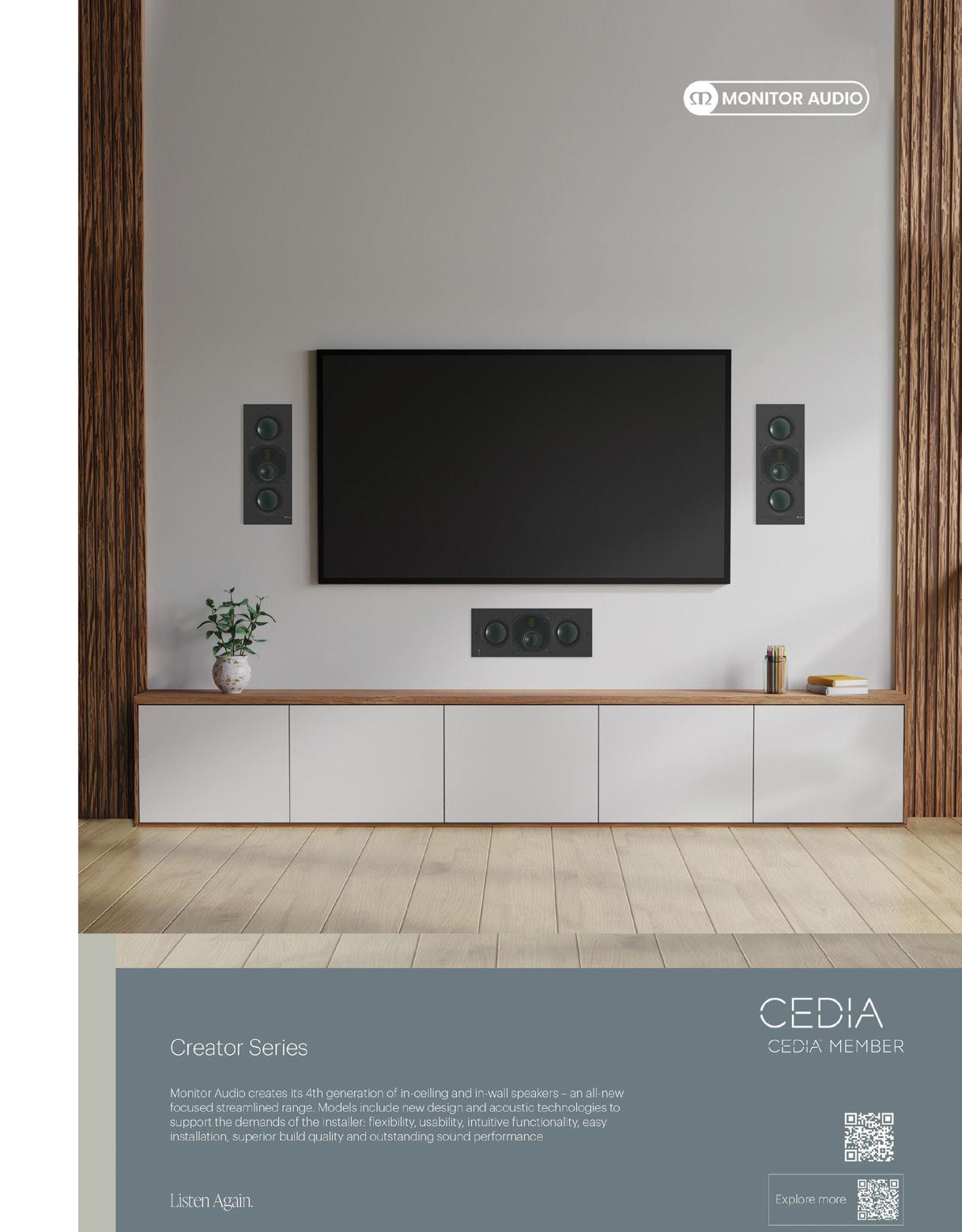


By Michael Heiss
In the early days of the InfoComm conference and trade show, the Projector Shoot Out was a valuable exercise for assessing new video technologies back when the differences between brands and models could be significant. While the need for such an event no longer exists, it seemed like a great time to do my own shootout, but this time between set-top boxes that are used to bring off-air, ATSC 3.0/NextGen TV into a home.
Now that some of the long-promised benefits of NextGen are starting to appear, you might want to get in the game. You can take advantage of features such as 1080p resolution, HDR, and now, finally, NextGen Apps that deliver features that rival or even exceed those of streaming along with hyper-localized content for news, sports, weather, emergency alerts, and a new feature, “play from beginning.” That’s right! Similar to streaming apps like Hulu Live or YouTube TV, if you land on an App-capable station while surfing, but land in the middle of a program, simply press the App button and navigate to “play from beginning,” and restart that program.
The competitors in our first NextGen TV Shoot Out span a price range from $89.95 to $249.95 for single-tuner models and $274.95 for a dual-tuner STB. In this type of review, one might tend to focus on differences, but it is also good to start with the basic items present in all of the products. For example, each is capable of tuning both standard ATSC 1.0 channels as well as new ATSC 3.0 signals. All are compatible with Dolby Audio and HDR. All come with remotes that have some level of
programmability for TV set functions such as power on/off, volume, and mute. All are reasonably compact units and have both wired and dual-band wireless internet connectivity. All also have at least one USB-A port for current or future DVR recording time expansion.
It is important to note that while all three are 4K capable, there are no stations actually broadcasting 4K content. However, here is where one of NextGen TV’s benefits comes into play: virtually all NextGen stations that broadcast 720p or 1080i on their regular channels, broadcast in 1080p on their NextGen channel. Combine that with an increasing amount of HDR content, such as this year’s Kentucky Derby and Indy 500, along with the Dolby Vision and Advanced HDR by Technicolor, and the video quality is often better than standard broadcasts even without 4K.
Early on there was some consumer concern about the digital rights management (DRM) system used by some stations and networks. All three boxes reviewed offer proper decoding, so there is no problem with this “behind the scenes” protection for content owners. Note, however, that the ADTH and Zapperbox products do require a persistent internet connection to view the protected content while the Zinwell is unique in that it does not. However, given the need for connectivity to get the frequent software updates/feature upgrades, bug fixes and in some cases that longer time program guide data I would not recommend using any of these products without connectivity.
One last important point of commonality: All three of these products require a direct HDMI connection to a display. Unlike previous ATSC 1.0 boxes, there is no whole-house, app-driven option that works with copy protected content. Fear not, however, as Zapperbox does plan to introduce products and software later this year that will enable you to share a single ATSC 3.0 tuner across the home network. Alternatively, for products such as monitors, projectors, or for viewing off-air content via an iOS or Android app, consider the new 4th Generation Tablo (see sidebar).

Now that we’ve discussed the commonalities, it is time to contrast the differences between the three shoot-out contenders. First is the ADTH NextGen TV Box, which carries an $89.95 retail price. It does the basics, including all of the features listed above, but it is the only product in the group with an optical digital audio output. It also has basic DVR capability that lets you record the program you are watching to an internal or external memory. That’s a start, but with only one tuner it is a bit limited since you can’t watch one program and record another or schedule an advance recording.
From a functionality standpoint the ADTH NextGen TV Box user interface is often a bit clumsy and confusing to use but it is manageable once you get familiar with it. Its unique features among our device trio include an optical audio output and the ability to pair a Bluetooth-powered remote.
Perhaps the biggest downside of the ADTH is the remote. Other than some color-coded buttons, a white navigation ring, “Home” and “Þ” buttons, and a red TV power button, all of the buttons are black and there is no screening on the remote to tell you at a glance what the button’s function is. That clearly is a problem in a dimly lit viewing situation. Also absent is a numeric keypad, something you would think would be standard in a device where you select channels by their number.
A spokesperson for Tolka Software, which powers the ADTH receiver, tells us that their DVR functionality is still in beta and will be updated and improved as time goes on along with an updated and improved interface. They also told us that new models will soon be shipping with a revised remote that will include a numeric keypad. That type of response speaks well for ADTH and the frequent update paths for all of these devices is definitely something that sets them apart from most other video display products.
In summary, while it falls a bit short on ease of use, the ADTH NextGen TV Box is an interesting point of entry for free, high-quality video and audio access to off-air TV with the added benefit of the NextGen App features. At $89.95 you can’t argue with the price and mine

The Zinwell ZAT-600B Channel Master provided me with the Zinwell ZAT-600B, which is available from retail and online outlets for $149.00. At the midpoint of
the price spread between our three STBs, it has its own unique take on how to present the NextGen TV service to consumers.
Upping the game, as befits a slightly higher price, the Zinwell has a very readable remote with a full numeric keypad. The presence of buttons for emergency alerts and the NextGen App features right in the center of the remote, combined with a smoother user interface, makes it much easier to use.
As is always the case, there is some give and take in a feature comparison. The Zinwell does not have either the DVR or optical output, but it is the only product of this type that enables you to view DRM-protected channels without an internet connection. While I would recommend internet connectivity so that you are able to receive software and feature updates, there are places where internet connectivity is sparce, if not totally unavailable. Remote vacation homes, tailgating, and RVs come to mind as obvious places where the ZAT-600B would be a perfect fit for downtime entertainment when all you need is a TV, an antenna, and a power source.
Attention to detail and the ability to respond to customer concerns is also a high point for the Zinwell ZAT-600B. I am not the only user to have complained about an overly bright front panel LED that more than lights up the room. Channel Master has heard the complaints, and a software fix is on the way.
With its ease of use and full feature set, the Zinwell ZAT-600B definitely sets a benchmark for a reasonably priced point of entry for an easy-to-use NextGen TV product that is particularly well suited for projectors and other displays that don’t have an off-air tuner of their

Completing the range is the ZapperBox M1, which retails for $249.95. There is also a twotuner version at $274.95 provided for this
review by Zapperbox. There is no hiding the fact that these prices are more than a bit higher than the ADTH and Zinwell, but it is also quite clear that this product has taken a much different approach to a NextGen product.
Two things stand out here. The first is a fromthe-ground-up user interface that is among the best I’ve seen for this type of product. Any evidence of Android underpinnings is totally invisible. Unlike the other two STBs, Zapper designed its UI from scratch, and it shows. The graphics are sharp, and the information is clear and comprehensive.
The other main difference is the inclusion of local DVR capability. This means that, without additional fees, you can record the show you are watching or schedule a manual recording by entering the channel number, date, and time, as long as you you add at least 128GB of storage via a microSD card or a USB thumb drive or standard external drive. Up to 50 hours of HD or 4K video or 115 hours of 1080p video can be stored with a 256GB card, but you can double or quadruple that using 512Gb or 1TB cards. Using the USB 3.0 or USB 2.0 Type-A ports external drives, up to 4TB have been tested and approved.
ZapperBox M1’s DVR capability and local storage also allows you pause/play for up to five minutes using the internal storage of up to an hour on microSD cards or external storage along with rewind/fast forward control for the program being watched. For an additional charge of $29.95/year you get a full 14-day program guide and the ability to select and record future programs from the guide or a search menu as well as view cover art for recorded shows.
Access to YouTube is another interesting addition to what is mostly intended to be the ZapperBox’s off-air tuner/DVR. This means that with one product you can have your broadcast channels and YouTube streaming, as well.
For all the features that the Zapperbox has, it does not include NextGen Apps. A spokesperson for Zapperbox has told me that it is on their product roadmap for a later software update, but at this time they look to expanding DVR functionality and expanding their product ecosystem as a priority. Those updates have
recently added more control over recordings such as not recording duplicates and recording new episodes only, recording only new episodes, and the ability to record encrypted broadband channels.
Indeed, starting with V3.0 updates this summer, Zapperboxes will become multi-room gateways so that two dual-tuner Zappers will act as a quad-tuner device. That roadmap also includes support for unencrypted programs over a home network to future non-tuner Zapperbox products and control via IP or use of an SDK for smart home integration and streaming apps for connected TVs.

In a world of home budget concerns over the rising cost of streaming services and cable to
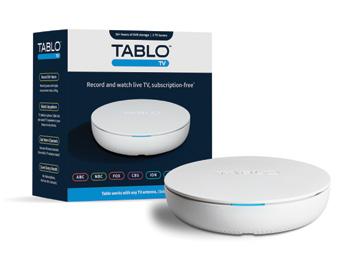
Tablo: An Off-Air Tuning and DVR Alternative
Along with the NextGen TV set top boxes, it is worth noting that there is another very reasonably priced option for off-air tuning and DVR. Tablo, a long-time fixture in the market, updated their product line
deliver broadcast stations, with the addition of a decent indoor or, even better, outdoor antenna these boxes bring you the best quality video and audio available off-air, for FREE. It also bears repeating again that while their features, remotes, and user interfaces differ, all three of these products do a good job of all the needed basics. Even better, albeit each in their own direction, all three brands have made good on their promises to address bugs, provide updates, and add more features. For something that is still a relatively new technology for consumers, this is a comforting fact given the rough road that other new technologies have faced in their early stages.
Back in the days of the old InfoComm Projector ShootOut, it was natural to be asked, “So which one is best? Which one would you recommend?” A question sometimes easier asked than answered. In this case the answer may not be as clear as you would like. It may seem as though I am ducking the question, but my response is, “It depends.”
ADTH is the most affordable, but that comes at a price with a beta version DVR with an interface and remote that some might find difficult to use.
The Zinwell ZAT-600B is a very solid choice at a reasonable price with a better remote and
last year with the introduction of the totally redesigned 4th Generation Tablo product. Eschewing the black, squarish look of their previous models, this white, circular design is different in many ways and is worth a look as another option to view and record free, ATSC 1.0 broadcast channels without any subscription costs.
Available in two- and four-tuner units, at $99.99 and $139.99 respectively, the new models keep to Tablo’s original model in that they
interface, along with the Apps features and the ability to use it in a location where there is no consistent internet connection.
The Zapperbox M-1 is the way to go if you are willing to pay a higher price and forgo, at least for now, NextGen Apps. The user interface is among the best around for this type of product and play/pause and rewind/fast forward along full DVR capability for all off-air channels while also having YouTube make it unique. Particularly for residential technology professionals, the impressive feature roadmap plan may compensate for the current lack of the App features in the long run.
We’ve been waiting for NextGen TV to arrive for quite some time but initially that required a new TV from Samsung, Hisense, Sony, or TCL. More NextGen-capable TVs are likely to hit the market as time moves forward, and perhaps even the return of LG who has currently stopped making NextGen sets. However, the availability of these three external products makes it easier and more affordable to put a toe in the NextGen waters. After living with all three for a few months, I can attest to the fact that having them is so easy that I am moving ever so slightly toward cutting more of the cords. x
have no remote but rather simply connect to your antenna and home broadband network with viewing and control being done through Roku, Fire TV, Android, iOS or Samsung smart TV apps, with apps for Apple TV and LG webOS in the works. Key improvements from earlier models are that there the 14day program guide is now free, with no annual charge. In addition, there is now 128GB of onboard storage that will let you record over 50 hours of content. You may also add your own external storage up to 8TB.
Along with the physical design the user interface has been updated for ease of use and to add additional program information. Another
major addition is access to over 70 free, ad-supported (FAST) streaming channels that you may also record.
Since, unlike the current NextGen TV boxes, Tablo does not require direct connection to a TV via HDMI you may place closest to an off-air antenna connection, either indoors or out, without regard to where the TV sets are. The ability to do that and then watch live or recorded content on any set in the home with no charge for storage or program guide info may be an interesting option for those who will forgo the benefits of NextGen TV for now while still having access to broadcast TV at a very affordable price.


Outfitting a backyard with weather-hardy tech built to withstand an occasional rain shower is one thing; equipping the outdoor area with products purposely designed and engineered to defy the power and erosion of gale-force winds, ocean waves, and sea salt is quite another.
The integration team at Future Automation & Design, based in Redondo Beach, California, understands all too well the importance of choosing the right technology for the severity of the environmental elements.
They recently completed one of their most extensive smart home projects to date, where a combination of more than 600 Coastal Source outdoor light fixtures and speakers would need to stand up to some of the harshest conditions on the California coastline while blending in beautifully with the home’s eye-catching landscape and casting elegant illumination throughout the property.
Built in 1930, the estate is considered a historic and architectural landmark in Los Angeles County. The estate also has a rich
design heritage, having been previously gifted to the landscape architect brothers that designed Palos Verdes Estates in Southern California and Central Park in New York City. Later it was inhabited by art curators and celebrities, even royalty, whose names are not mentioned to respect their privacy. Paying tribute to these iconic design influencers, it was important to the current owner that the new exterior lighting system be as visually stunning as it was durable and functional.
“Rockslides and erosion are common along the area’s shoreline, which often necessitates frequent modifications to the construction and design of outdoor living spaces so we knew the technology solutions would need to be able to evolve and adapt easily to topography changes,” said Future Automation & Design President
By Amanda Carmel
CEO
had already made a large investment in cliffside pylons to protect the property from weather and ocean-related damage, so the outdoor speakers and lighting solutions needed to be top quality. Because Coastal Source designs and engineers its products to endure the most extreme
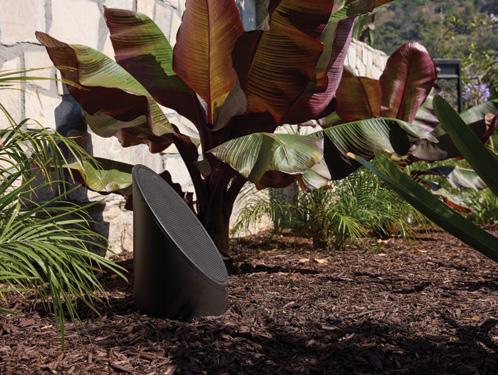
environments, they were the obvious choice for this extensive, evolving outdoor project.”
Once the majority of the outdoor improvements were complete, Future Automation & Design quickly buttoned up the schematics and installation of Coastal Source speakers and light fixtures, automating them via a Control4 system with Josh.ai voice control. Every inch of the cliffside estate is beautifully illuminated and blanketed in rich, high-fidelity audio, courtesy of a wide range of fixture designs, including Coastal Source path lighting, uplighting, niche lighting, flush-mount lighting and bollard speakers and subwoofers. The lighting design was so extensive that Future Automation & Design tackled it in several phases, starting with the installation of 210 fixtures in Phase 1, 228 fixtures in Phase 2, 139 fixtures in Phase 3, and finally, 50 fixtures in Phase 4. At least 50 percent of the lighting fixtures had to be retrofitted into existing hardscape, so Future Automation & Design used their retrofit expertise to achieve the best results. Coastal Source speakers were added throughout each step of the ongoing project.
The owners weren’t opposed to the number of light fixtures and speakers peppering the landscape, patios, gardens, and other outdoor areas, but they were unfamiliar with Coastal Source. To demonstrate the quality, flexibility, and durability of Coastal’s lighting fixtures and speakers, Coastal Source sent its fully outfitted product van to the client’s home for an in-person preliminary experience, and the homeowners were sold.
“Having so many fixtures and placement options afforded more opportunity to apply our lighting artistry to the residence — to really accentuate the magnificent architectural features and natural beauty of the landscape,” Coleman emphasized.
Still, there was no way of getting around the natural transformation of the surrounding terrain caused by wind, waves, and salt air. Future Automation & Design relied on Coastal Source’s patented Coastal Connector cabling system to streamline the relocation and addition of fixtures and
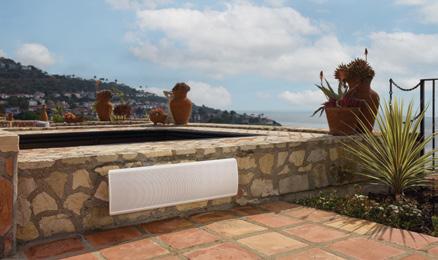




speakers to adapt and evolve easily as the terrain morphed.
“Coastal’s flexible cabling which eliminates the need to cut, splice and waterproof in the field was crucial to this integration,” Coleman said. “We didn’t need to trench conduits and the plug-and-play cabling architecture allows the system to grow and change along with the environment.”
With the Coastal Source lighting and audio systems firmly established, the owners are using their outdoor living spaces more than ever before. For parties, weddings, and other social events, the integration of Coastal Source products into their outdoor spaces has enabled them to enhance their setting with elegant lighting and music.
“The combination of our lighting expertise and Coastal Source’s wide selection of fixtures let us create an outdoor lighting and audio system that makes the outdoor area an incredible place to entertain,” Coleman added.
Also vital to the end-result is the seamless integration of Coastal Source audio and lighting with the home’s Control4 automation system and Josh. ai voice-enabled interface. The owners rarely need to interact with the outdoor lighting and audio. The lights activate automatically at sunset and simple commands spoken to a Josh.ai voice assistant handle the delivery of music and more specific lighting requests.
The addition of Coastal Source light fixtures and speakers helped breathe new life into the magnificent oceanside property. Outdoor areas are more inviting, the scenery is more beautiful, and the music and illumination are easier than ever to control and customize. Even Mother Nature can’t put a damper on these audible and visual outdoor enhancements, thanks to the rugged yet elegant construction of the Coastal Source products and meticulous design and installation by Future Automation & Design. x
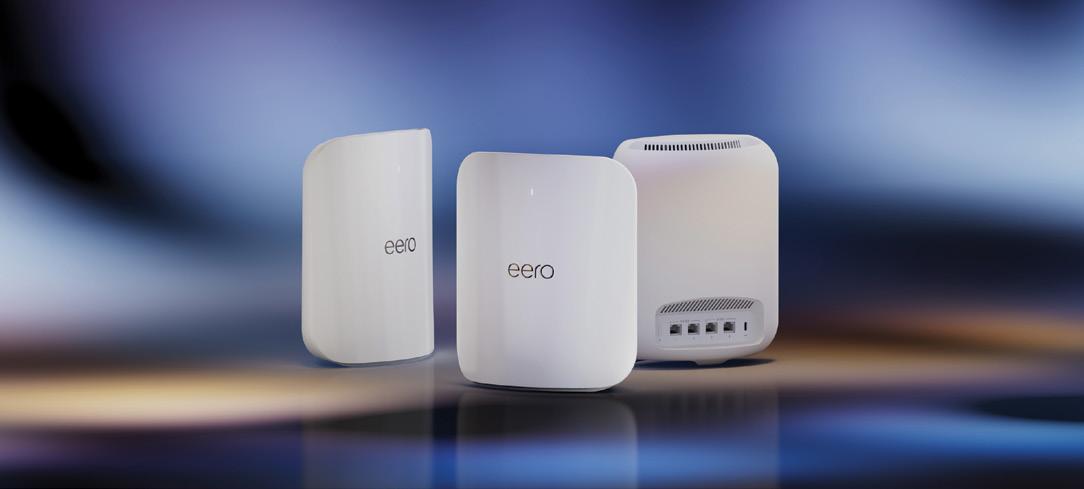
By Henry Clifford
I have a confession to make. Don’t tell anyone, but I’ve become a bit of an eero fanboy. Ever since they launched their first Wi-Fi systems eight years ago, things seemed to calm down in my CI business, Livewire, almost overnight. Much like its audio cousin in the audio world, Sonos, eero has existed in the “things that just work” space since Day One. Needless to say, when I saw their announcement touting a new Wi-Fi 7 solution, I quickly reached out to get my sweaty paws on a demo system. I didn’t have to wait long.
Unboxing
The bulky eero Max 7 box arrived and the first thing that struck me was the sheer size of the new units compared to previous models. The top of the box lifts off to reveal three of the units stacked vertically, one behind the other, as if sitting in a dishwasher rack. The overall look clearly ticks the boxes of retail shelf appeal. It also has the ability to ship in own container (SIOC), which Amazon has been pushing for several years.
I lifted up each unit to reveal a
The Max 7 units themselves take a little getting used to because they take up twice as much space as earlier eero units. They’re also designed to stand up versus lie flat, which is a radical departure from previous generations of eero gear.
Installation
I opened up the eero app and followed along with the instructions after choosing to replace the eeros already installed. At this point I want to share a little “learned the hard way” tidbit: Not all USB-C power supplies are created equal (I first discovered this with the Sonos Move) and the new eeros proved to be no exception. I’d been able to swap just the eero units on prior upgrade missions. Not this time. I took the time to unplug the old power supplies and redress a few rack locations with velcro straps and before I knew it, we were all set and ready to test.
Before I started the upgrade project, I made sure to run a few speed tests in anticipation of a good before and after picture.
My original scan showed 231/131 Mbps down/up standing in a second-floor hallway between two eero access points. I made sure my iPhone was paired to a hardwired eero before running the test. I also checked to make sure the eero’s own app WAN speed test reflected the true bandwidth I was paying for with Verizon FiOS (1 Gbps). It was.
There aren’t very many devices out there to test the new Wi-FI 7 standard with its theoretical max download speed of 46 Gbps, so I focused my efforts on signal strength and overall upload/ download performance with Wi-Fi 6 compared to the eero Pro 6 gear that I had installed previously.
According to eero, the antennae on the eero Max 7 are omnidirectional, so placing the unit facing front or back didn’t matter (though it sure looks like it does during the unboxing). I went back to the same hallway spot and ran the test again. The numbers don’t lie. This time speeds had jumped to 356/239 Mbps down/up. I’ll save you the
math; that’s a 54% download increase over the previous generation eero installation. I walked around and ran a few more speed tests. Each showed marked improvements over the old hardware.
The eero Max 7 3 pack retails for $1,699 and claims coverage up to 7,500 square feet. While these might be 3x as expensive as prior generations, I’m taking into account the headroom and futureproofing that they offer. The new Wi-FI 7 standard is sure to be ratified late this year and upgrading now is a smart move to ensure that you will stay ahead of the technology curve.
While Wi-Fi 8 may be coming along in 2028, I’m trying to imagine a world where we need 46 Gbps worth of performance out of our Wi-Fi devices (I’m sure I’ll be eating my words in a few short years). If you want to be proactive and your network is a few years old, I highly recommend the step up into the eero Max 7. x
By Jay Basen
CleanForce Air manufactures a number of different air purifiers. Its most economical is the Rainbow Air. However, even though this is their least expensive model, it still boasts impressive capabilities.
The Rainbow Air can handle filtering the air in a room as large as 2550 sq. ft. In a room this size, it will filter all the air in the room once per hour. In smaller rooms, it can filter all the air in the room multiple times per hour.
The Rainbow Air utilizes CleanForce Air’s triple filter technology. The three layers of the Rainbow Air filter are the Prefilter, H3 True HEPA Filter, and iMACT Activated Carbon Filter.
The Pre-filter layer collects larger particulates in the air including pollen and pet dander. The H3 True HEPA Filter layer traps 99.97% of the particles in the air including PM10 and PM2.5 particulates. PM10 particles are 10 μm in diamerter (or smaller). Examples include smoke, mold spores, bacteria, and airborne viruses. PM2.5 particulates are 2.5 μm (or smaller). Examples include smoke and other particulates generated from combustion. The iMACT Activated Carbon Filter layer captures volatile organic compounds (VOCs) including odors from cooking and pets.
The Rainbow Air can be controlled using the unit’s built-in
control panel, through the CleanForce Air, Tuya, or Smart Life smart phone app, Alexa voice commands, and other third-party integrations.
The Rainbow Air includes built-in air quality sensors that will display the air quality in the room on the unit’s LED display and automatically adjust the fan speed of the unit depending on the level of air quality in the room.
I chose to use the CleanForce app to control the Rainbow Air purifier. The app is straight forward to use, and it is easy to add the Rainbow Air purifier to the app by following the onscreen prompts.
Once that is complete, Alexa integration is accomplished using the Tuya Smart Alexa skill. After you add the Tuya Smart Alexa skill and link your account with your CleanForce app login, the Rainbow Air Purifier will immediately show up as an Alexa device. The Tuya Smart Alexa skill supports a wide range of voice commands and status queries.
The CleanForce Air app (the same UI is available in the Tuya app or Smart Life app if you choose to use one of them instead) is easy to use and provides basic control of the Rainbow Air. In addition, you can create scenes that include control of other Tuya-compatible
products and control of the Rainbow Air based on weather changes, schedules, and the control of Tuya-compatible products based on activity of the Rainbow Air. For example, you could turn on a compatible ceiling fan to provide more ventilation in a room when the Rainbow Air detects bad air quality.
Because the Rainbow Air purifier sucks in air for filtration from all directions around the unit, CleanForce Air recommends that the Rainbow Air be placed at least one foot from any wall, piece of furniture, etc. Coupled with its size (approximately 11” x 11” x 25” tall), this means that a Rainbow Air purifier cannot be easily hidden and will have an impact on a room’s décor. Fortunately, the Rainbow Air incorporates a pleasant, modern design and is available in gray, pink, blue, green, or yellow.
I found the sound produced by the Rainbow air purifier to be very reasonable. When the fan is on low, the sound is less the 50 decibels, which is the sound level of a quiet conversation. When the fan is on medium, the sound is approximately 54 decibels, which is about the sound level of household refrigerator. When the fan is on high, the unit is quite a bit noisier, producing a sound level of approximately 69

decibels, which is about the sound level of light to moderate traffic. Finally, when Sleep mode is enabled, I found that the Rainbow Air was literally silent. I couldn’t tell that it was operating except that I could feel the air flow produced by the fan when I placed my hand on top of it.
The air cleaning ability of the Rainbow Air is impressive. I live in the mountains, so there is little need for air conditioning. Opening the windows at night cools my house down nicely. Then, shutting them in the morning locks in the cool air and our house will stay reasonably cool all day. However, this technique can be problematic during “smoke season.” One day a wildfire caused the AQI reading in my home to climb to 57 — a reading that is in the yellow/ moderate level (51-100). After running the Rainbow Air for one hour at the high fan speed, the reading had dropped all the way to an AQI reading of 12, which is at the low end of the green/good level (0-50). This is the first residential air purifier that I have used that could make that dramatic a change in IAQ in that short a time period. x
By Henry Clifford
Multiroom audio is an interesting category. While it may seem as though most Americans are perfectly happy placing their iPhones inside a bowl for optimum sound performance, thankfully there still appear to be plenty of folks who crave a little “extra cheese on their Whopper,” as Chris Rock would say.
Couple that desire with 25 solid years of architectural audio installations in new homes, and we’ve seen a few upgrade waves come and go. Some of these cycles involved upgrading old volume control knobs with individual streaming amplifiers capable of AirPlay and Bluetooth Audio. Others have seen Sonos take the world by storm one amplifier at a time.
Enter Juke Audio into the fray recently with its Juke+ streaming amplifier, which is capable of driving six amplified zones of audio. Would the Juke+ be able to hang in this highly competitive category? I fired up the test bench and prepared to put the amplifier through its paces.
The Juke+ arrives in a blue cardboard box, which flips up to reveal accessories and a Quick Start guide. The packaging is minimalistic with no extra flair. I laid everything out, inventorying a power cord, Ethernet cable, Wi-Fi antenna, and some Phoenix connectors.
Installation
The included quick installation guide contained four easy steps that I followed to the letter. After downloading the Juke app, I plugged the Juke+ into a power outlet, screwed on the Wi-Fi antenna, terminated my speakers into the back via one of the Phoenix connectors, and flicked on the power switch, which immediately glowed dark red. I heard a low hum and intuited that it was time to head back to my smartphone to finish the setup.
I booted up the app and followed the step-by-step instructions on each screen prompting me to connect the amplifier to our network and then start labeling each zone. The whole process took less than five minutes. I’ve never seen a multi room/zone amplifier set up as easily as the Juke+.
After labeling each zone, I took out my iPhone and started playing “Blood on The Rooftops” by Genesis. I pressed the AirPlay option and saw my newly labeled zone, connected to it, and Phil Collins’ crooning soon filled the room. Grouping zones was incredibly intuitive with Apple’s moves into becoming the home technology interface of choice becoming more and more apparent with each new release of iOS.
I moved around to a variety of different devices, including an iMac, iPad, and PC. They all interacted flawlessly with the Juke+. I even used the multiroom mode across different streaming amplifiers, and it all went off without a hitch. The amplifier also boasts a line-in capability for auxiliary sources such as televisions or Apple TVs via AirPlay, Bluetooth, or hardwired connections.
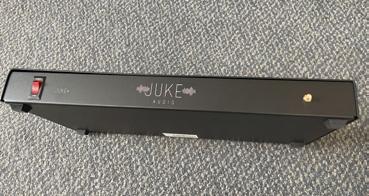


The Juke+ retails for $2,499. That’s $416.50 per zone. Compared to the real estate taken up by something like a Sonos Amp, never mind the $700 per zone price tag, the Juke+ takes up a surprisingly small amount of space for a 100 watt per channel sixzone streaming amplifier. The old days of being concerned about phone calls interrupting AirPlay streams are long since
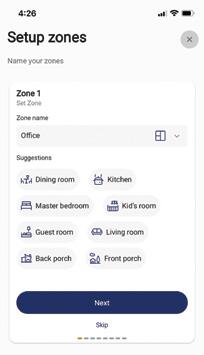
gone. If you have a house full of old knob volume controls or are looking for options during a new build, take a hard look at the Juke+. It’s dead simple and does exactly what it’s supposed to. I’m adding it to a very short list of technology in my life that just works. x
By Henry Clifford
As more energy and lighting options are flooding the market in recent months, it’s starting to resemble one of the AV world’s original “raisons d’etre”: Replacing coffee tables of clutter with universal remote controls. Instead of having apps for solar, EV charging, energy management, and backup generators, Savant is riding to the rescue by offering an integrated approach leveraging the same appeal to simplicity that many homeowners have gotten accustomed to with their other home technology systems.
The Hyannis, MA-based company sent me a Savant Power System demo pedestal kit to test drive their solution firsthand. Would this be a bunch of complicated space junk or truly deliver on the promise of energy independence? I was about to find out.
A combination inverter and battery storage tower are the brains of the Savant Power System operation, dynamically handling solar AC/DC, grid power, and myriad other power sources. Although the incoming power is not conditioned, the system monitors over voltage, under voltage, frequency, and stability. If anything looks amiss, the system immediately shifts to battery storage, ensuring clean power is always delivered to sensitive electronics throughout the home. Savant Power can
support 200- to 800-amp incoming electrical services and offers the following all-in budget guidance for these common residential scenarios:
• 200-amp service $23,000
MSRP with 20kw hours of battery storage - 2000-4000 square feet
• 400-amp service $46,000
MSRP with 40kw hours of battery storage - 5000+ square feet
You may be asking yourself, “How much is 20kw hours of battery storage?” Thanks to the Savant Pro app, it’s very easy to figure out how much time is left on the battery in the event of a power outage. Similar to Tesla’s easy percent-based thermometer, the app features an hours/ minutes left indicator and dynamically updates when switching appliances on and off.
I played with feature for quite some time and while my previous experiences during power outages had me compromising with our old generator approach by picking the important circuits in the house during installation, this new look at energy independence had me feeling much more in command. I switched a few appliances on an off while watching the battery life increase or dwindle in real time. I also loved the demo pedestal’s ability to simulate a power outage just by pressing a button on the side of the cabinet.
While it supports any Level 2 charger, Savant offers its own EV
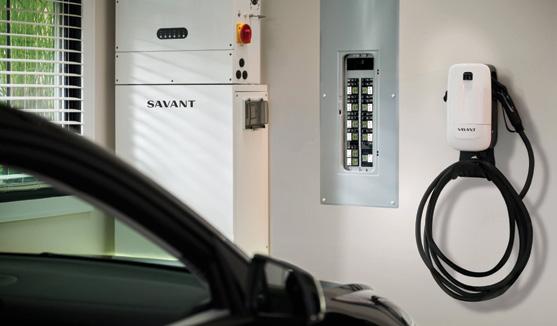
plug-in module for $800 MSRP. With the advent of products like the Ford F-150 Lightning, which touts the ability to power the home, products like those offered within the Savant Power System family are quickly becoming a necessity rather just a “nice-tohave” way of intelligently managing a wide variety of power options.
Paired with the smart inverter, Savant’s flexible load management pairs a control module with each circuit breaker in the panel, delivering simple labels on the app to enable easy on/off control via checkboxes from a phone or tablet. Savant suggests budgeting $3,000 MSRP assuming an incoming 200-amp service with 30 circuits.
Once these key modules are installed and working, Savant offers three energy management modes, putting an incredible level of control in the hands of
the homeowner:
• Eco Mode – Grid use is reduced by maximizing solar and battery
• Storm Watch – Automatically reserves all available battery storage for a predicted off-grid or weather event while storing energy and protecting the home from a possible outage.
• Power Outage – Disconnect from the grid and run entirely on solar and battery
The Savant Power System offers an amazing level of autonomy and energy independence for customers seeking an integrated experience that can allay fears of what might happen during a grid outage. It is simple, intuitive and, with a 30% federal tax credit available until 2032, deserves a strong look during construction, especially if backup power is part of the discussion. For those with the available budget, a Savant Power System is a no-brainer. x
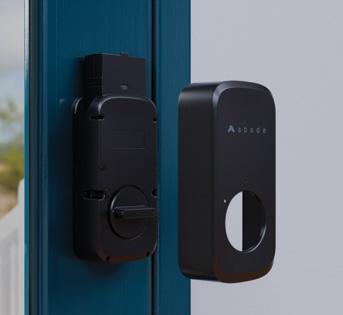
The Wi-Fi-enabled Abode Lock, priced at $129.99 MSRP for the lock and keypad bundle, is designed to transform any latch-style deadbolt into a smart lock. The included keypad connects to the lock via Bluetooth and enables exterior access via PIN code or fingerprint recognition. It boasts a 4,000 mAh rechargeable lithium-ion battery that provides prolonged operation of up to 12 months with average use. Low battery warnings are issued to users via the Abode app to help ensure continuous protection.
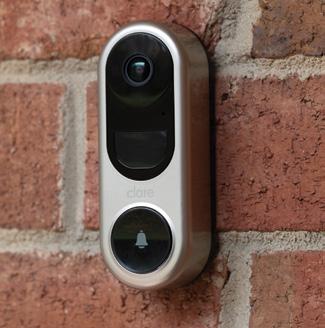
The ClareVision Smart Video Doorbell is a simple surveillance and security upgrade that combines 1080p video capture, AI-based smart analytics, 2.4GHz and 5GHz Wi-Fi connectivity, and two-way voice calling into a slim device that uses existing doorbell wires for power. Users can view the live feed from the ClareOne Wireless Security and Smart Home Panel and the ClareVision App or integrate the video doorbell with Control4 as a surveillance device. Recorded video is stored via an internal 16GB microSD card, which integrators and users can expand up to 512GB.

The Yale Approach and Yale Keypad are easy to control with the Yale Access app when connected to Wi-Fi and the Yale Connect Wi-Fi Bridge. Once installed, users can enjoy keyless entry, monitor the lock at any time on the app’s activity feed, and grant unique access codes to guests. It is compatible with Amazon Alexa, Google Home, Philips Hue, and Samsung SmartThings, and will later be available to upgrade to Matter through a simple software update.

Allegion Launches Schlage XE360 Locks for Multifamily Applications. The XE360 Series is the next generation of electronic locks from Schlage, outfitted with the options and features most looked for by multifamily properties and made to fit the needs of a wide range of common area openings. With in-demand finishes and modern lever styles, the XE360 Series was designed to complement a variety of design styles. It operates in an offline or No-Tour environment, which eliminates the need for property managers to visit the lock as credentials update the access rights. The locks integrate with Allegion and third-party access control software providers and proptech systems.
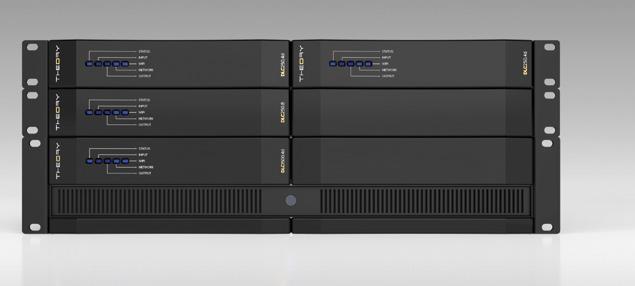
Theory Audio Design has begun shipping a new DLC distributed loudspeaker controller platform including three the DLC-250.4d, DLC1500.4d, and DLC-250.8 models. Ideal for residential or commercial installations, the new models offer between 4 and 8 channels of intelligent power, full DSP matrix, TCP/IP control through a wired connection, or directly via its on-board Wi-Fi access point. Two of the three models, the DLC-250.4d and DLC-1500.4d, also add Dante and AES67 audio-over-IP digital I/O compatibility.
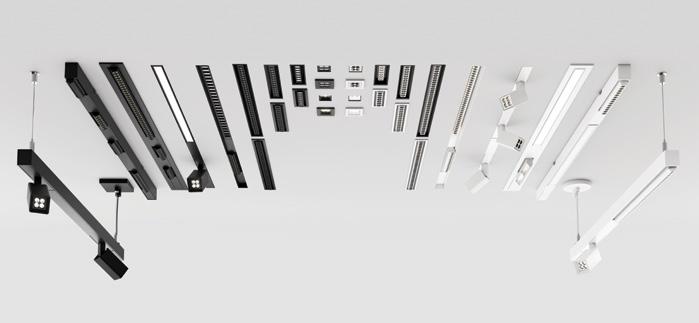
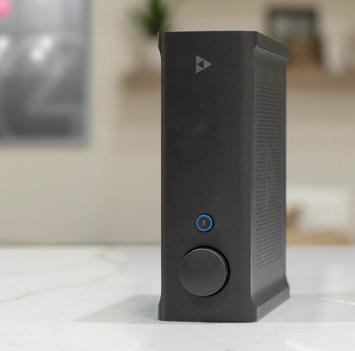
The Snap One audiophile-grade Triad SA1 Ryff-enabled streaming amplifier offers a range of premium features including an all-metal chassis, 2x200w power delivery, HDMI ARC/eARC capability, advanced integration support for Control4 and MoIP systems, presets for Triad and Episode speakers, a 6-band parametric EQ and improved connector options and hardware. The improvements delivered by the SA1 empower Snap One Partners to more easily integrate superior-quality wireless audio throughout homes to support multi-zone systems, media room audio, and listening room solutions.

LED lighting manufacturer USAI Lighting has launched its LittleTwos of 2” aperture Pinholes and 2” diameter Cylinder light fixtures. The sister lines of the LittleOnes and the LittleOnes Micro Doubles, this new collection offers high-performance design in a small package. The line delivers up to 2000 lumens with advanced glare control. They are available in a wide range of options, including trim styles and configurations, beam spreads, and housings, and are compatible with most architectural control systems.
The Luminii STENOS range of LED downlights features a micro-optic CSP engine that delivers uniform light output, high CRI, and glare control across a discrete offering of downlight and track systems. Available in a 1” square, and 3”, 5”, 12” linear in both trimmed and trimless, Stenos downlights produce an output range of 250-1260 lumens, include four CCTs options, and 95+ CRI, as well as a +/- 30-degee aimable tilt, perfect beam quality, and magnetic beam shaping accessories.
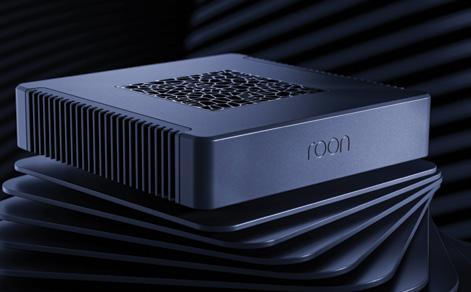
Harman’s Roon Labs has released Nucleus One, a new addition to the Nucleus music server product line. It leverages advances in computer technology, technical design, and manufacturing processes to deliver a more affordable ($499.99) turn-key device specifically intended for Roon’s library management, music exploration, and multiroom music player software. Comparable in performance to the previous Nucleus, the Nucleus One is a dedicated Roon server molded from high-quality polycarbonate with visual characteristics that echo the premium Nucleus Titan.
The Kaleidescape Terra Prime 96 terabyte (TB) movie server — the company’s largest capacity server — is loaded with every 4K title available on the its movie store at the time of shipment. It features an all-new board design with faster processing power and faster network, for faster movie downloads and overall system performance. Terra Prime is the only dedicated movie server with 2.5 Gigabit Ethernet and its servers are equipped with enterprise-class disk drives, the same drives chosen by data centers for performance and reliability.
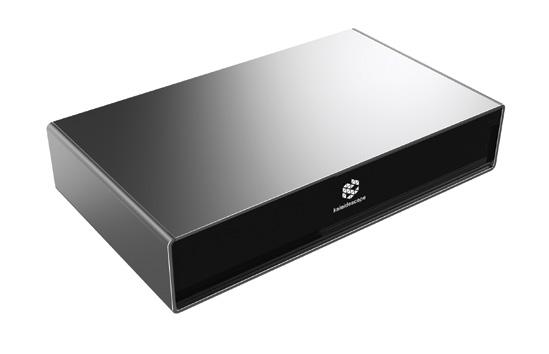

Séura Smart Lights are tunable LED lights designed to seamlessly enhance any custom Séura Lighted Mirror, offering more control and customization to users’ daily grooming rituals. They include LED color control, brightness control, color temperature adjustments, and personalized scene creation. By incorporating comprehensive digital control, users can adjust lighting levels to suit their specific tasks, preferences, or time of day, positively impacting mood and productivity.
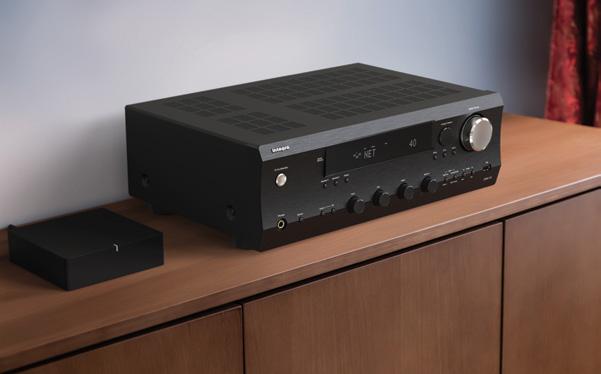
The Integra DTM-7.4 Network Stereo Receiver delivers audiophilegrade sound, improved connectivity, high-res streaming, and built-in voice assistants such as Google and Apple. It is designed with full suite of built-in CI integration software tools and compatibility with Control4 SDDP, Crestron, Josh, and Savant, offering 2-channel,110watts per channel, web setup, IP control, RS232, IR in/out and remote control and diagnostics, Roon Ready connectivity, HDMI 4in/1out, and supports 8K up to 40Gbps with ARC technology.

Samsung Electronics America has added to its MICRO LED portfolio with the MS1B (89”, 101” class) and MS1C (114” class screen size). The most advanced display technology available from Samsung, MICRO LED delivers infinite depth, improved color reproduction, and high brightness, all in a minimalistic design that provides the ultimate statement piece for any luxury home. The portfolio uses microscopic LEDs radiating over 8 million points of light and features an advanced MICRO AI processor that uses AI to upscale the screen’s picture into 4K resolution.

Draper’s StyleLine Fixed Screen offers the performance of multiple screen types in a single flexible projection screen model. It is available up to 12 feet wide with two bezel trim options — 5/8” or 3-3/16” — and in an edgeless version. The aluminum frame features a back channel for attaching LED backlighting, and both bezels are covered with Veltex, a black, velvety textile that eliminates light reflections from projector over scan. It is light and installer-friendly thanks to a quick-connect subframe, hook and loop fabric attachment, and screw-on decorative frame.










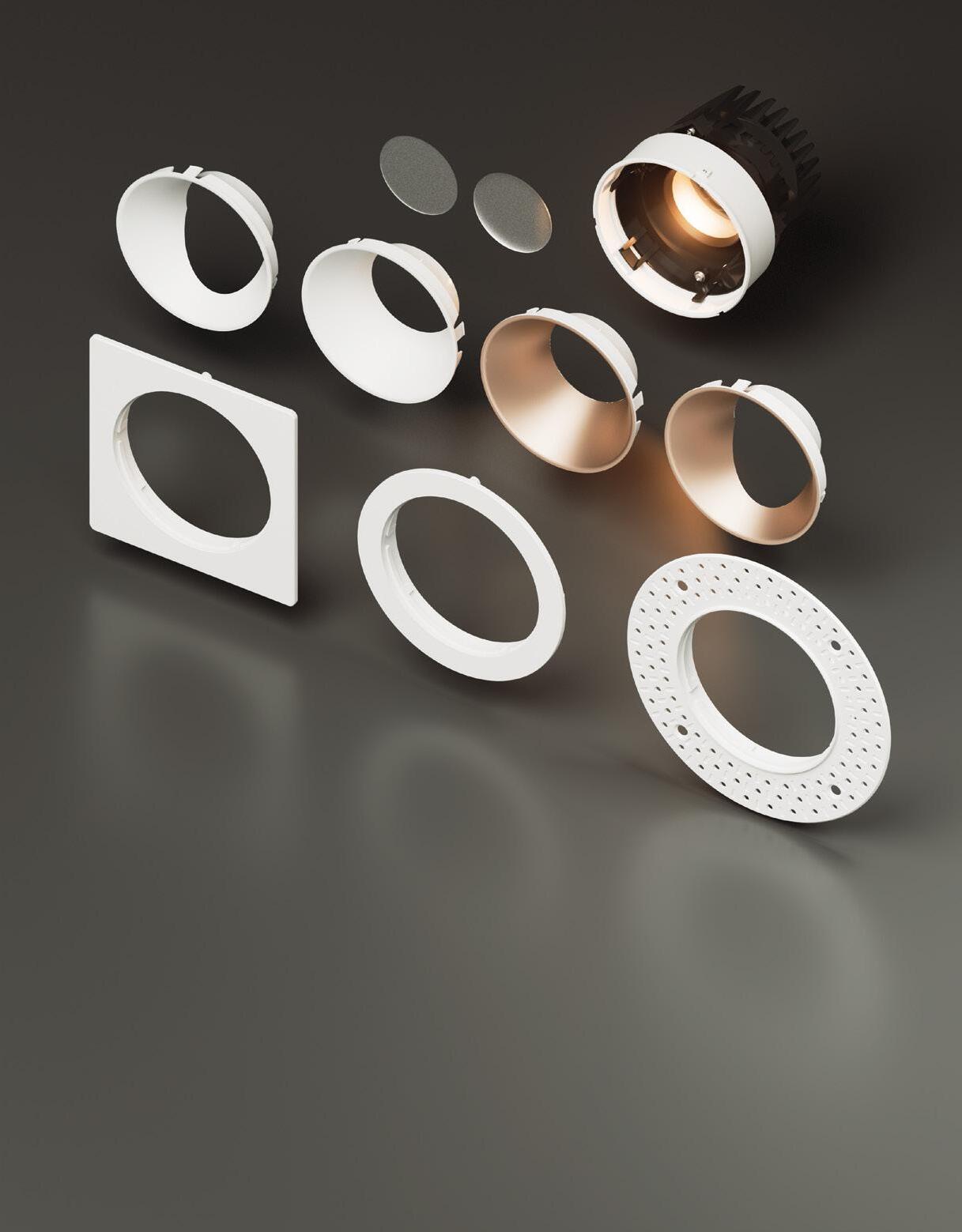

The Sonos Architectural 8” in-ceiling speakers were designed and tuned in collaboration with Sonance. These powerful architectural speakers offer natural, room-filling sound, and feature updates such as a woofer that delivers a smoother midrange, deeper bass, and broader coverage area as well as a 20% larger tweeter that produces a wider frequency range for more accurate and detailed highs and mids. The new Sonos speaker also features an optimized waveguide that ensures natural-sounding vocals and high-frequency dispersion. Its unique high-excursion motor significantly improves bass response down to 29Hz.
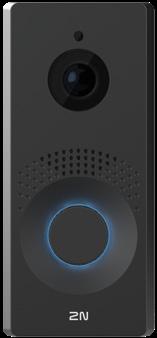
The 2N IP One, available in Bronze, Black, and Grey, is a highly durable Full HD IP video intercom that is designed to be easy to use with one backlit button, a camera, speaker, and microphone. The camera is equipped with a 156-degree wide-angle lens for video calls and features Adaptive Face Zooming. It can also alert the tenant to unexpected activity, enhancing home security. Connect the 2N IP One to a 2N indoor station, the My2N app, or with leading home automation systems to enhance the resident experience.
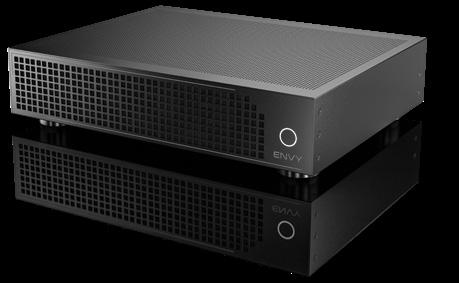
madVR Labs has added the Envy Core, which is half the size, half the weight, and half the price of the Envy Pro MK2, while still delivering the level of video processing for which the Envy is known. This more affordable model is ideal for use with more modestly priced TVs and projectors, media rooms, and home theater systems, providing exceptional performance and features when the more advanced Envy Pro MK2 or the reference standard video processing of the Envy Extreme MK2 is outside the budget.


The Skyworth Canvas Art TV seamlessly blends technology and aesthetics, redefining home entertainment. With its ultra-thin design, flush wallmounting, and matte screen with anti-glare display, it mimics framed art when not in use. The Art Mode boasts over 100 free masterpieces and transforms it into a canvas for creativity, while the 4K QLED screen ensures stunning visuals. An all-in-one design eliminates the hassle of dealing with external connection boxes during installation. All components and connections are conveniently built into the TV itself, streamlining the setup process.
Monitor Audio has launched the new Studio 89, a “cutting-edge loudspeaker” that takes inspiration from the brand’s Studio Series, which brought studio monitor-quality sound to the home in the 1980s. Small, compact, and visually unique, Studio 89 is an uncompromising loudspeaker capable of filling large rooms with pristine sound. It benefits from a host of cutting-edge Monitor Audio innovations, offers a unique finish, and is born of the same Transparent Design Philosophy as the statement Hyphn.
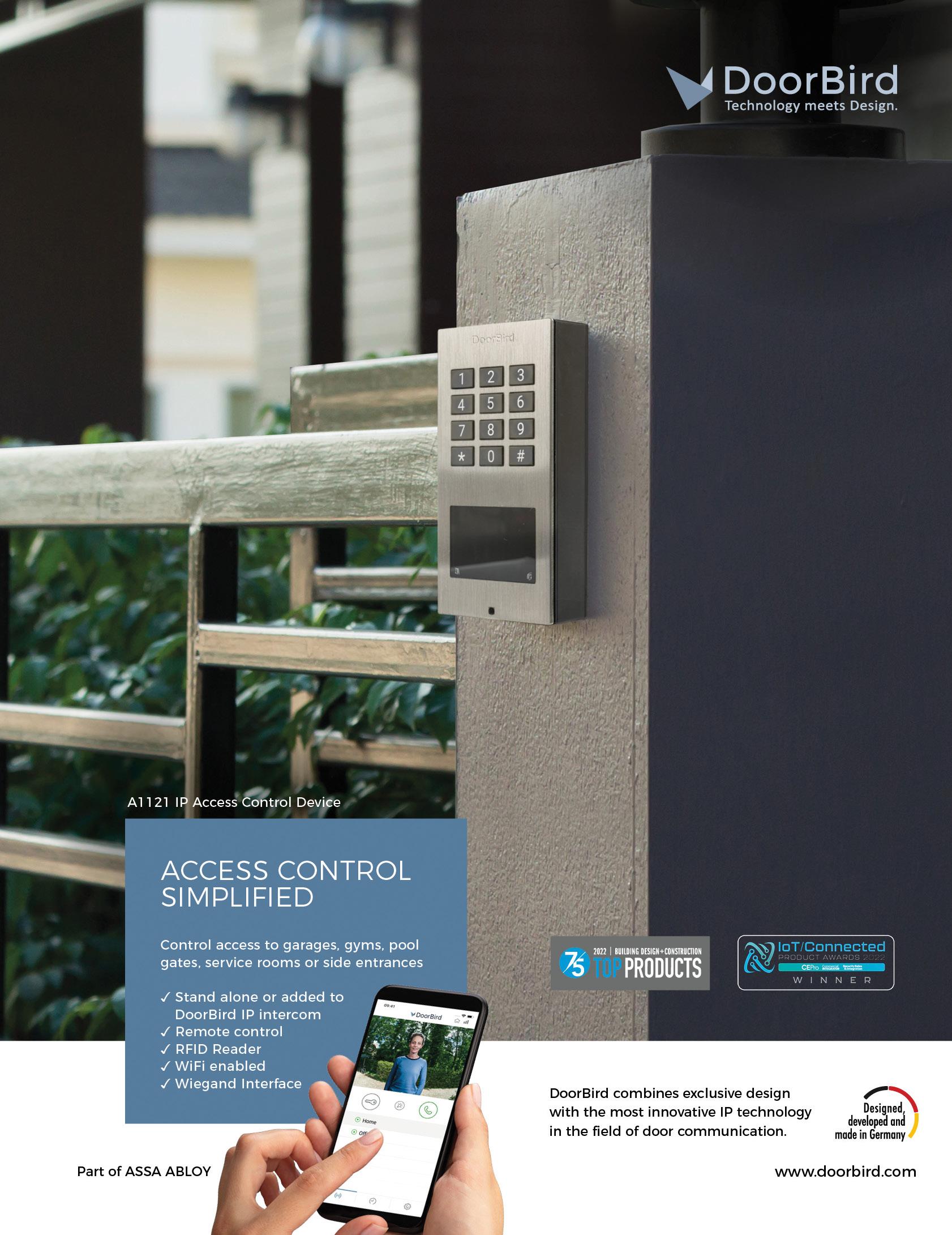
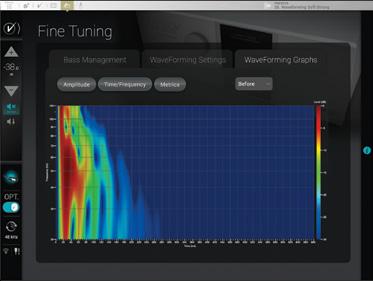
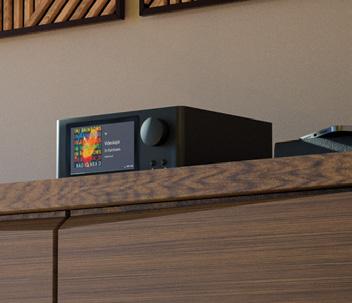
The NAD Electronics C 700 V2 BluOS Streaming Amplifier builds on its predecessor, the C 700 V2, with upgrades in performance and functionality. The C 700 V2 features an improved ESS Sabre DAC, MM phono input, Dolby Digital decoding, Dirac Live readiness, and IR remote control. One of the standout features of the C 700 V2 is its integration of stereo and surround sound capabilities. The ability to switch to a 4.1 Dolby Digital Surround setup with BluOS-enabled rear channels and a wired subwoofer expands its versatility, making it suitable for both music and home theater applications.
Trinnov Audio WaveForming is now publicly available on the Altitude line of audio processors. This room optimization technology allows audio professionals and enthusiasts to achieve unprecedented bass performance and consistency across the listening space. WaveForming will be a default feature of all future Altitude products and can be enabled on existing Altitude processers via a free software upgrade. WaveForming has evolved after 18 months of user feedback to encompass a variety of subwoofer layouts, including conventional layouts with as few as four subwoofers. This design flexibility makes it feasible for a wide range of spaces and budgets.

The URC TRC-1120 handheld remote control offers a sleek, compact design that was inspired by consumer preferences for gold accents. Its 2-inch, color LCD touchscreen delivers high-resolution graphics and backlit hard buttons for ease of use. A built-in mic and speaker communicate with Amazon Alexa (compatible with more than 140,000 devices), Comcast Xfinity, or Apple TV. It also communicates with Ring doorbells and cameras and streams live video and twoway voice exchange.

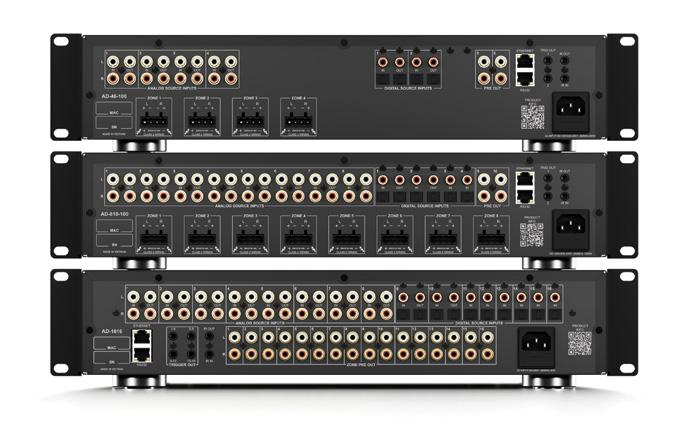
The Bond Breeze Pro is a wind/rain/ sunlight smart sensor that can trigger multiple motorized screens, pergola louvers, and shutters based on userdefined thresholds. It is mounted vertically atop a one-inch pole, pointed north, ideally placed about 13 feet high off the ground. Installation is wire-free; the sensor communicates to the Bridge via RF. Set-up is done within the Bond app and the Breeze Pro is powered by built-in solar and supercapacitor, with two back-up AA batteries.
RTI’s new DSP matrix amplifier line offers enhanced power with full DSP control for both residential and commercial applications. The AD46-100 is 4x6 DSP matrix amplifier distributing four sources to six zones, with four zones amplified at up to 100W (4Ω) all channels driven, or 50W (8Ω) per channel. The AD-810-100 is an 8x10 DSP matrix amplifier distributing eight sources to 10 zones, with eight zones amplified at up to 100W (4Ω) or 50W (8Ω) per channel. The AD-1616 is a 16-source 16-zone DSP audio matrix for larger installations.







By Doug Roberson, COO, Shelly USA
When making a decision on technology for yourself or your customers, distinguishing between fact and fiction is critical. Here are five common myths about smart homes, debunked to provide you with a clearer understanding of the technology and its impact on your daily life.
This notion is flawed. The reality is that different smart home devices have varying data requirements. If your Wi-Fi is struggling, it’s more likely due to high-bandwidth activities such as streaming, gaming, or large file downloads, not the modest demands of your smart home devices.
The concern here is whether having smart home devices that aren’t used frequently is problematic. The answer is straightforward: No, it’s not. Smart home devices are typically lowcost and low maintenance. They don’t consume much electricity and require minimal investment in time and effort to set up. Smart home devices like motion sensors or smart plugs might not be in constant use, but they are invaluable when you do need them.
The typical smart home controller consumes less than one watt of electricity. Moreover, many smart devices come with features like timers, schedules, power-on defaults, and energy monitoring, which will reduce your overall energy consumption. In fact, the products that supposedly increase your electric bill often are designed to help reduce it.
While any internet-connected device can theoretically pose a security risk, the notion that smart home devices are inherently dangerous is foolishness. Security in smart homes is about taking appropriate precautions. For instance, many experts recommend placing smart home devices on a separate VLAN from your main devices to isolate them from your critical data and systems. Choosing devices that operate locally rather than relying on cloud services can also enhance security. Select products that are compliant with GDPR or other stringent data protection regulations.
This actually is factual and important, but it is based on the assumption that all smart home ecosystems are complicated and poorly integrated. The key to a wellfunctioning smart home is to choose products that offer multiple integration options. The best strategy is to start with a platform that supports a wide range of devices and can unify them into a cohesive system. This approach reduces frustration and ensures that your smart home can grow and adapt over time without becoming a tangled mess of incompatible gadgets.



Step into the extraordinary with the all-new, natural language voice assistant, natively integrated with Nice Home Management. Transform the mundane into magical experiences with just your voice. Whether you want to adjust the room temperature, cue up your favorite entertainment, set the perfect mood lighting, or even brew your morning coffee—just say the words to make it happen.


The Nice voice assistant is smart, powerful, and secure. It remembers your preferences to set the perfect scene for every mood and moment of your day.


OS8.9
New video doorbell
New speakers
Updated controllers
Updated touch panels
Sun shades and more...

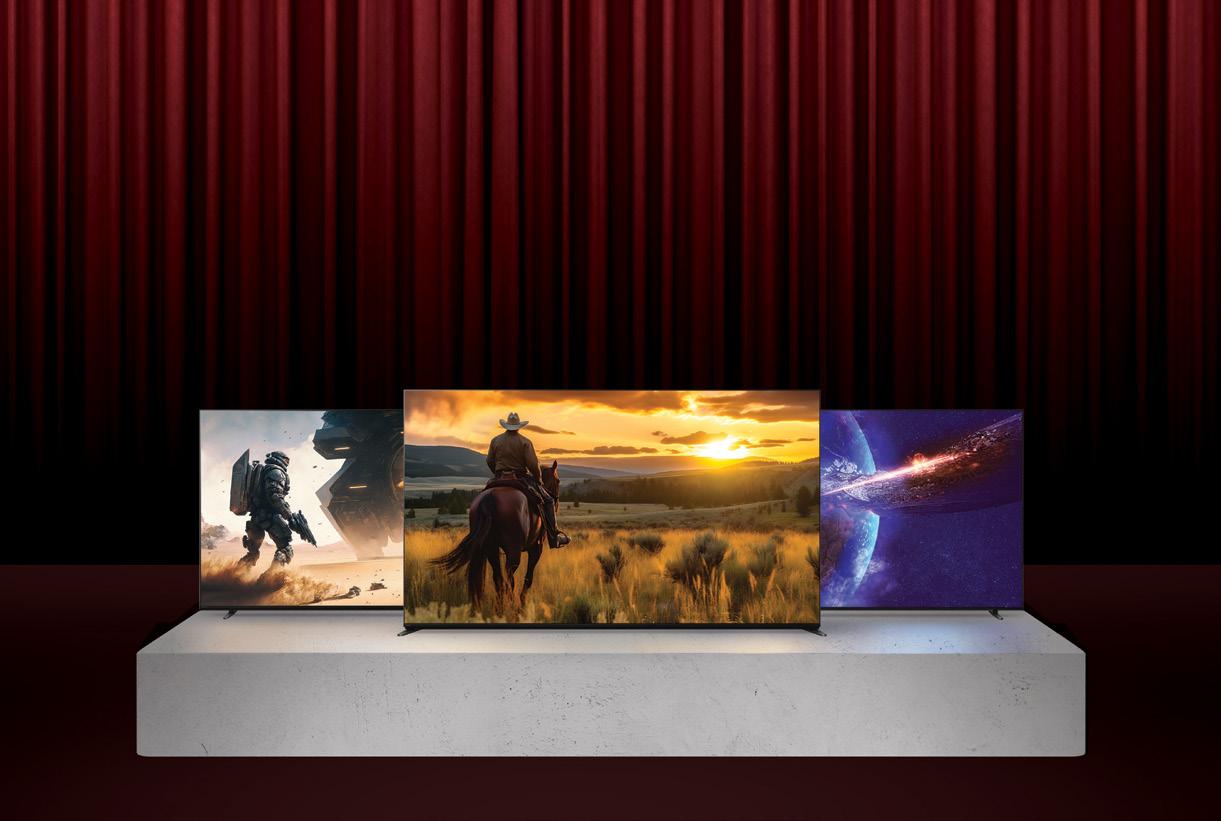

Premium picture quality and full range of install options for every imaginable space.
Sony BRAVIA TVs are designed to deliver cinematic brightness, contrast, and color, giving your customer the ultimate movie theater experience at home. With a full range of panel technologies from our brightest 4K1 Mini-LED to our high contrast OLED, sizes ranging from 43" Class to 85" Class, and full support of features specified in HDMI 2.1.
The BRAVIA lineup has a model to fit all of your customers requests.